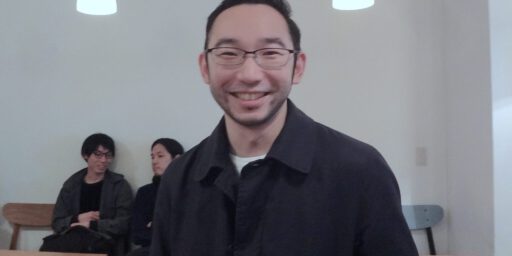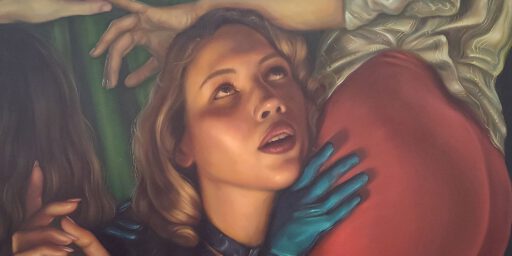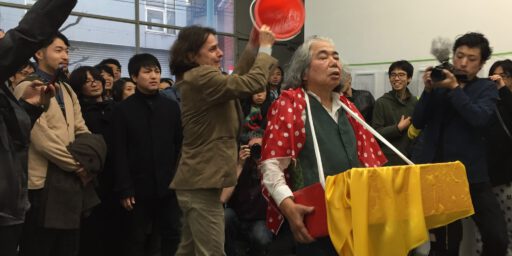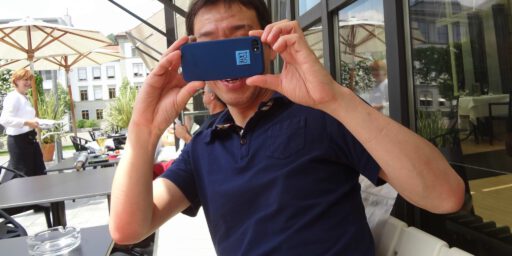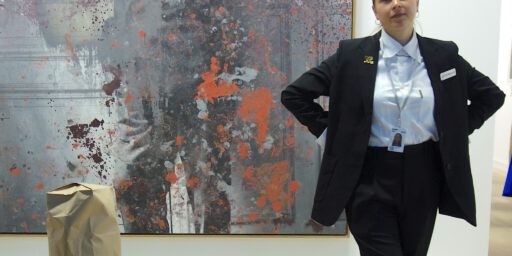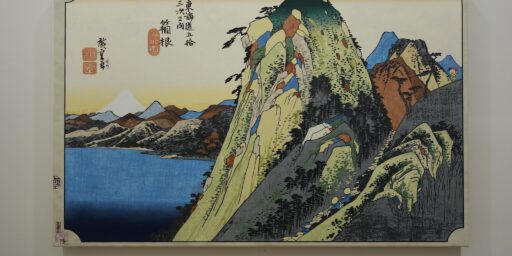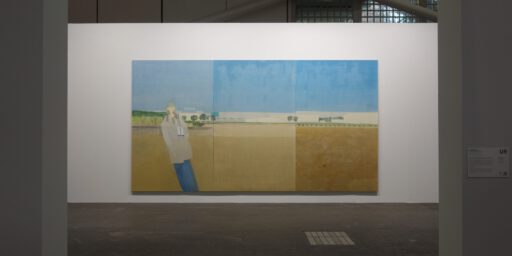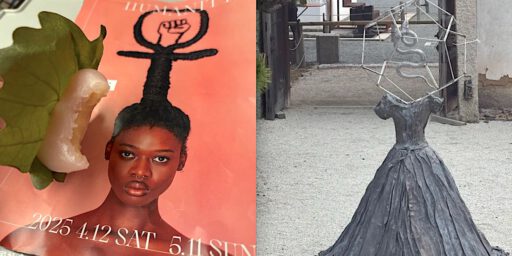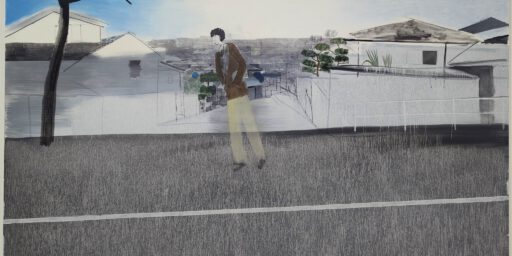白髪一雄・フット・ペインティング SHIRAGA Kazuo - Foot Paintings
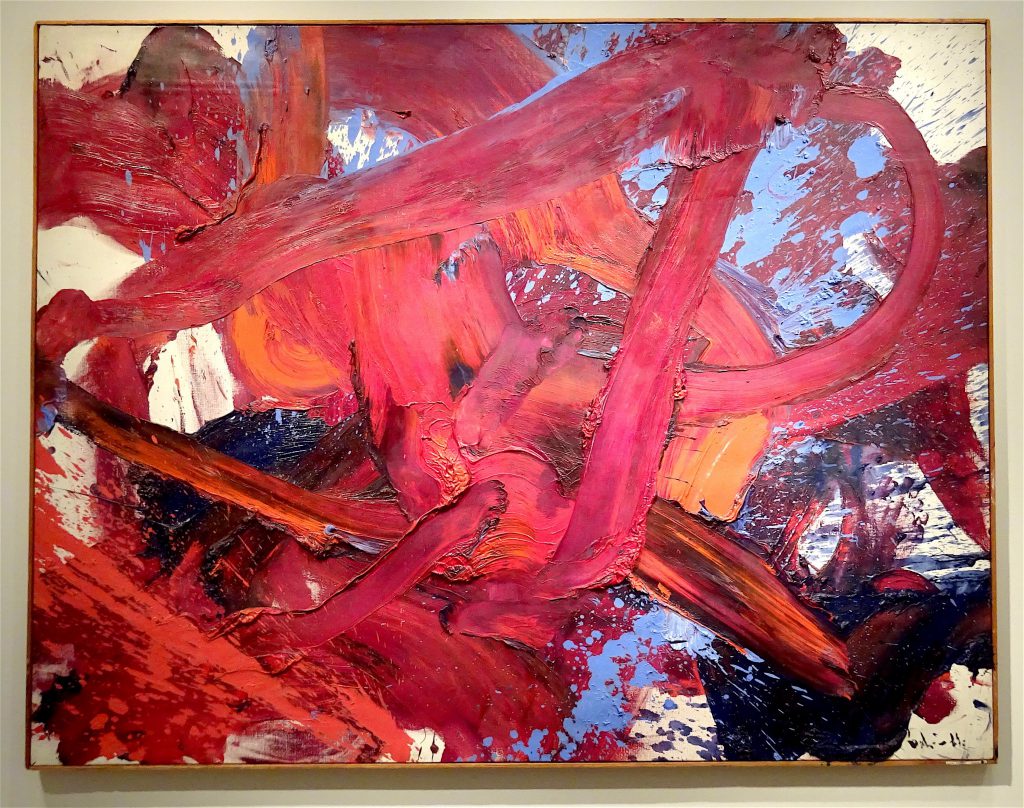

Berlin 1988. A divided city with a quiet art scene in the Western part, where I could randomly experience contemporary Japanese art. The still existing Galerie Georg Nothelfer showed for the first time large-size ‘foot paintings’ by SHIRAGA Kazuo 白髪一雄. (1)
That visit to the gallery gradually let me focus on the fascinating world of GUTAI (2) and its unique art historical essence, with eye-opening encounters at the short-lived ICA in Roppongi, Tokyo and at the 45th Venice Biennale in 1993.
32 years later, 2020. Shiraga can be actually called the most recognizable GUTAI artist overseas, his foot paintings became one of the most sought-after works in the global art scene. (3) A wonderful exhibition to get an overview of Shiraga’s formula and pioneering performance art has been actually organized by the Opera City Gallery in Shinjuku, Tokyo, providing overwhelming, never seen, monumental works. Amazing curatorial practice, also in regard of lining up such delicate, difficult to restore, paintings. Early works, sketches, original tools for execution, historical catalogues with GUTAI founder YOSHIHARA Jiro 吉原 治良 (4) and originator of “Art Informel”, French critic Michel Tapié (5), publications about interactive constellations with similar “Zero-artists”‘ groups in Europe (6), video documentaries, an educative biography writing (in which Shiraga’s Buddhist priesthood at Enryakuji-Temple at Hieizan Mountain is explained in detail), – all these interesting art-topics resonate superbly with the curious, also younger, audience, transforming the Opera City Gallery visit into an unforgettable, attractive experience. Bravo!
For the initiates, an imaginary museum opens up with artists like SHIRAGA Kazuo, Emilio Vedova, Karl Otto Götz, Gerhard Richter, Max Ernst, Jackson Pollock, Antoni Tàpies, Georges Mathieu, Karel Appel, Wols, Nicolas de Staël, Emil Schumacher, just to name a few. (Obviously, all these artists influence one own’s painterly process when executing abstract paintings.) With this stringent but anarchistic body of work, Shiraga gave artistic experimentalism an important, influential voice in Japan. Together with his GUTAI colleagues, he pushed the creative process of free artistic expression a bit further, over the edge, so to say. Thus the GUTAI artists subverted long-established hierarchical norms of artistic creation, still seen today in other artists’ groups like ‘Nitten’ 日展 or ‘Inten’ 院展. (7)
The exhibition offers several surprises, one of them “Wild Boar Hunting 1″「猪狩壱」, executed in 1963, loaned from the Museum of Contemporary Art, Tokyo (one of my favorite museums in Tokyo, where I exhibited in 2004). The curators succeeded in the best way we can imagine. Stimulating discoveries, undermining our accepted notions about Shiraga’s art practice, and finally, embodying the whole spectrum of his playfulness, radical adventurism and approach towards existentialism.
Fortunately, this first retrospective in Tokyo offers a historical opportunity of understanding Shiraga’s evolutionary process, with which ‘formula’ he, with the help of his wife and artist Fujiko 白髪富士子 (8), executed those foot paintings: starting with the year 1957, continuing even after the GUTAI group had been disbanded in 1972, and finally reaching the climax with a painting from 1991, named “Ryusen (Spring of dragon)” 「龍泉」. By chance I encountered “Ryusen” in three different exhibition contexts. (9) Please understand, that every time a different ambience means new, precarious lighting. I tried my best in finding the right exposure.
This kind of comparative study naturally asks for similar paintings I’ve seen in other venues, too. With my painterly eye, I was always eager to discover new, subtle nuances in Shiraga’s style & practice. This fascination still continues until today, and hereby I’m happy to share those encounters with my ART+CULTURE readers.
A sense of interval brings also clearness. Different art historical curatorial practices mean different academic papers about “Modernism”. Shiraga embodies now multi-facetted interpretations; newly articulated by representations through researchers/art advisors/collectors like Allan Schwartzman (10) and Howard Rachofsky (11), or gallery owners like Axel Vervoordt (12), Lévy Gorvy (13) and Fergus McCaffrey (14), cooperating with the younger generation of curators.
SHIRAGA Kazuo – re-born as a timeless cutting-edge artist from Japan.
All these efforts, and the intentions may be obvious, are now culminating in this marvelous exhibition at Opera City Gallery. Please take the chance to contemplate and be fascinated, until the 22nd of March.
Tokyo 2020/02/02
Mario A
Kazuo Shiraga: A Retrospective @ Tokyo Opera City Art Gallery
白髪一雄 Kazuo Shiraga : a retrospective
http://www.operacity.jp/ag/exh229/
期間:2020年1月11日[土]─ 3月22日[日]
会場:東京オペラシティ アートギャラリー[3Fギャラリー1, 2]
開館時間:11:00 ─ 19:00 (金・土は11:00 ─ 20:00/いずれも最終入場は閉館30分前まで)
休館日:月曜日(祝日の場合は翌火曜日)、2月9日[日](全館休館日)
入場料:一般 1,200円(1,000円)、大学・高校生 800円(600円)、中学生以下無料
January 11, 2020 to March 22, 2020
Opening hours: 11:00 to 19:00
Fridays closing at 20:00, Saturdays closing at 20:00
Closed on Mondays
Note: On a public holiday Monday, the museum is open but closed on the following Tuesday.
Fee: Adults ¥1200, University & High School Students ¥800, Junior High Students & Younger and Persons with Disability Certificates & 1 Companion Free
Address: 3-20-2 Nishi-Shinjuku, Shinjuku-ku, Tokyo 163-1403
Phone: 03-5777-8600
5 minute walk from East exit of Hatsudai Station on the Keio New line
http://www.operacity.jp/ag/exh229/
up-date 2020/3/4
Announcements from the Tokyo Opera City Art Gallery.
Feb 17: To prevent corona virus from spreading, the staff will wear masks.
Feb 28: On government’s request and to prevent the corona virus from spreading, Tokyo Opera City Art Gallery will be temporarily closed from 29th of February to 16th of March. Up-dates will be announced via website.
2020.02.17
スタッフのマスク着用について
当財団が運営管理する各施設(コンサートホール、リサイタルホール、チケットセンター、アートギャラリー)ならびに店舗(ギャラリー5)におきまして、新型コロナウイルスの感染拡大防止のため、スタッフがマスクを着用させていただく場合がございます。
何卒ご理解いただきますようお願い申し上げます。
公益財団法人 東京オペラシティ文化財団
http://www.operacity.jp/topics/detail.php?id=585
——
【重要】アートギャラリー臨時休館のおしらせ
(2月29日[土]─ 3月16日[月])
東京オペラシティ アートギャラリーでは、新型コロナウイルス感染症の感染予防・拡散防止にかかる政府からの要請をふまえ、2020年2月29日[土]から3月16日[月]の予定で臨時休館いたします。その後の予定については、当ウェブサイトで改めてお知らせいたします。
皆様のご理解とご協力を賜りますようお願い申し上げます。
2020年2月28日
東京オペラシティ アートギャラリー
http://www.operacity.jp/topics/detail.php?id=592
(1)
Normally, I hesitate in writing down this kind of information, however, the rediscovery and popularity of Shiraga’s works relate to its actual exorbitant prices. At the Galerie Nothelfer the price tag was 10.000 Deutsche Mark.
The seller was the widow of a doctor who had bought the painting for 25.000 Deutsche Mark from Galerie Nothelfer in 1992
Sale: 420 / Post War / Contemporary Art, Dec. 06. 2014 in München  Lot 820
KAZUO SHIRAGA
Chijikusei Gotenrai, 1961
https://www.kettererkunst.com/details-e.php?obnr=114001083&anummer=420&detail=1
SOTHEBY’S, ART CONTEMPORAIN EVENING SALE, 04 DECEMBER 2019 | PARIS, Lot 4
Kazuo Shiraga
TENTAISEI SOUSHIKO (THE WINGED TIGER), 1960
https://www.sothebys.com/en/auctions/ecatalogue/2019/contemporary-evening-sale-pf1915/lot.4.html
(2)
「具体」ってなんだ?―結成50周年の前衛美術グループ18年の記録 (日本語) 単行本 – 2004/1/16
平井 章一 (著)
https://www.amazon.co.jp/「具体」ってなんだ-―結成50周年の前衛美術グループ18年の記録-平井-章一/dp/4568201772
2004 “Gutai Retrospective”, Hyogo Prefectural Museum of Art, Kobe, Japan
Title: What’s GUTAI?
Editor/s: Shoichi HIRAI(平井章一)
Description: 2004 marks the 50th anniversary of the Gutai Art Association, which was formed by the painter Yoshihara Jiro and a group of young artists in the Hanshin area. The group produced a large body of work and embraced a multitude of expressive forms. Gaining recognition in both Japan and in the U.S. and Europe, Gutai was the first Japanese post-war art group to be affiliated with a Western art movement. The group dissolved in 1972 following the death of Yoshihara. In the mid-1980s, a series of Gutai retrospectives were held throughout Japan and in Spain, Yugoslavia, Italy, Germany and France.
This book offers a concise overview of the 18-year history of Gutai, highlighting key developments, activities and exhibitions, and is filled with numerous photographs. It provides biographical sketches of some of its former members and includes a chronology, guide to Gutai exhibition sites, museums with important collections of Gutai art, as well as resources with further information.
Language/s: English, Japanese
Chapter Heading/s: The Pioneering Significance of Gutai in Post-War Art History – Shigenobu KIMURA(木村重信)
Gutai History
Birth and Challenge: Early Period 1954-1957
Leaping and Development: Middle Period 1957-1965
Maturing and the End: Late Period 1965-1972
Post Gutai
A Guide to Gutai
Gutai — Toward a Reconsideration – Shoichi HIRAI(平井章一)
Artist/s: Jiro YOSHIHARA(吉原治良), Sadami AZUMA(東貞美), Norio IMAI(今井祝雄), Kumiko IMANAKA(今中クミ子), Kei ISETANI(伊勢谷圭), Tamiko UEDA(上田民子), Chiyu UEMAE(上前智祐), Hiroshi OKADA, Akira KANAYAMA(金山明), Kimiko OHARA(大原紀美子), Minoru ONODA(小野田實), Yozo UKITA(浮田要三), Itoko ONO, Shozo SHIMAMOTO(嶋本昭三), Kazuo SHIRAGA(白髮一雄), Saburo MURAKAMI(村上三郎), Atsuko TANAKA(田中敦子), Sadaharu HORIO(堀尾貞治), Sadamasa MOTONAGA(元永定正), Michio YOSHIHARA(吉原通雄), Takesada MATSUTANI(松谷武判), Toshio YOSHIDA(吉田稔郎), Motonao TAKASAKI(高崎元尚), Yasuo SUMI(鷲見康夫), Tsuyoshi MAEKAWA(前川強), Fujiko SHIRAGA(白髪富士子), Tsuruko YAMAZAKI(山崎つる子), Yoshio SEKINE(関根美夫), Hideo YOSHIHARA(吉原英雄), Aine KINASHI(木梨アイネ), Minoru YOSHIDA(ヨシダミノル), Shuji MUKAI(向井修二), Akiko HORIO(堀尾昭子), Yuko NASAKA(名坂有子), Hiroshi WATANABE(渡辺宏), Seiko KANNO, Keiko MORIUCHI(森内敬子), Hajime OKAMOTO, Sadayuki KAWAMURA, KIKUNAMI Joji(聴涛襄治), KITANI Shigeki(喜谷繁暉), Yoshihiko SHIOYA, Toshiko KINOSHITA(木下淑子), Noboru SAKAMITSU, Masaya SAKAMOTO(坂本昌也), Takeshi SHIBATA, TAI Satoshi(田井智), Keizo TANAKA, Ryuji TANAKA(田中竜児), Teruyuki TSUBOUCHI(坪内晃幸), Michimasa NAOHARA(猶原通正), Koichi NAKAHASHI, Senkichiro NASAKA(名坂千吉郎), Takehiro NABEKURA, Yoshiko HASHIGAMI, Toichiro FUJIKAWA, Yutaka FUNAI(船井裕), MASANOBU Masatoshi(正延正俊), Yutaka MATSUDA(松田豊)
Publisher/s: Bijutsu Shuppan-Sha , Tokyo, Japan, 2004, 207 pages
ISBN / ISSN: 4568201772

screenshot

https://www.christies.com/features/gallery-talk-collection-of-rodolphe-stadler-fr-3723-3.aspx
Gallery Talk (Français): Art Contemporain : chefs-d’œuvre de la collection Rodolphe Stadler
Gutai – Les créateur de la performance artistique – Japon 1964
GUTAI
(3)
Kazuo Shiraga: Looking Beyond the Brush
(4)
https://en.wikipedia.org/wiki/Jiro_Yoshihara
https://ja.wikipedia.org/wiki/吉原治良
(5)
https://en.wikipedia.org/wiki/Michel_Tapié
https://ja.wikipedia.org/wiki/ミシェル・タピエ
https://artscape.jp/artword/index.php/アンフォルメル
The Eye of Michel Tapié, ‘Art Lover’ by Juliette Evezard
https://www.franck-prazan.com/en/2018/07/26/the-eye-of-michel-tapie-art-lover-by-juliette-evezard/
(6)
https://de.wikipedia.org/wiki/ZERO
http://zerofoundation.de
https://en.wikipedia.org/wiki/The_Dutch_Nul_group
ZERO – Radical Art of the ’50s and ’60s
(7)
NITTEN 日展
https://nitten.or.jp
https://ja.wikipedia.org/wiki/日展
https://de.wikipedia.org/wiki/Nihon_Bijutsu_Tenrankai
INTEN 院展
http://nihonbijutsuin.or.jp
https://ja.wikipedia.org/wiki/日本美術院
https://en.wikipedia.org/wiki/Nihon_Bijutsuin
(8)
Fergus McCaffrey | Fujiko Shiraga: 1955-1961
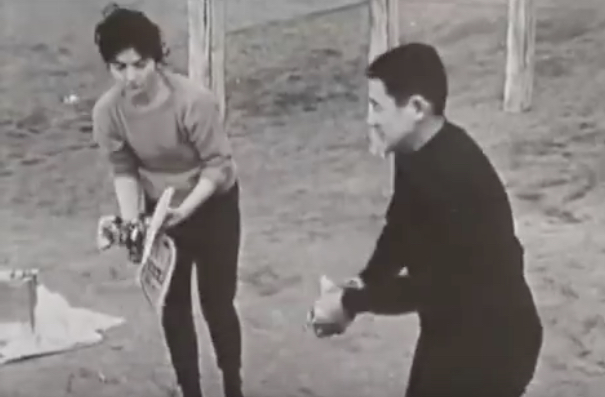
screenshot
白髪富士子 SHIRAGA Fujiko 1928–2015
1928年(昭和3)、大阪に生まれる。1946年(昭和21)、大阪府立大手前高等女学校(現・大阪府立大手前高等学校)を卒業。1948年(昭和23)、白髪一雄と結婚。1955年(昭和30)、「真夏の太陽にいどむモダンアート野外実験展」で細長い板を縦に二分割した作品を発表する。同年、具体美術協会会員となり、和紙を素材とした平面作品を制作する。1961年(昭和36)の第10回具体美術展を最後に、制作活動を休止。
http://www.archaic.or.jp/shiraga/exhibition/index.php?id=11
http://www.oralarthistory.org/archives/shiraga_kazuo/interview_02.php
(9)
1) In June 2014 in Switzerland, at the Art Basel booth of the gallery Fergus McCaffrey, see
https://art-culture.world/articles/robert-ryman-new-gallery-space-of-fergus-mccaffrey-tokyo/
2) In March 2019 in Tokyo, at the gallery Fergus McCaffrey, see:
https://art-culture.world/articles/shiraga-kazuo-ha-chong-hyun-gerhard-richter-bernard-frize-白髪一雄-ゲルハルト・リヒター/
3) In January 2020 at the Tokyo Opera City Art Gallery
(10)
“At the time, Schwartzman was a freelance critic for The New Yorker and the New York Times, and he had never advised a private collector on his purchases before. After working with Rachofsky, Schwartzman went on to become one of the world’s most sought-out art advisors, eventually taking the helm of the collection belonging to Brazilian mining billionaire Bernardo Paz, who named him director of Instituto Inhotim, his private museum in the jungle. Schwartzman later founded Art Agency, Partners, with the auction veteran Amy Cappellazzo, which was purchased by Sotheby’s in 2016 for $85 million.”
from:
The Collector Who Helped Build Dallas’s Texas-Sized Art Scene
Artsy, Nate Freeman, April 13, 2018
https://www.artsy.net/article/artsy-editorial-collector-helped-build-dallass-texas-sized-art-scene
(11)
THE RACHOFSKY HOUSE
http://www.rachofskyhouse.org
The Collector Who Helped Build Dallas’s Texas-Sized Art Scene
Artsy, Nate Freeman, April 13, 2018
https://www.artsy.net/article/artsy-editorial-collector-helped-build-dallass-texas-sized-art-scene
2015, with a guide tour by curator Gabriel Ritter
Art This Week-At the Dallas Msueum of Art-Between Action and the Unknown
(12)
100% CULTUUR: Axel Vervoordt
(13)
LÉVY GORVY
https://www.levygorvy.com/artist/kazuo-shiraga/
(14)
see:
ロバート・ライマン展 @ 新空間「ファーガス・マカフリー東京」ギャラリー
Robert Ryman @ New Gallery Space of Fergus McCaffrey Tokyo
https://art-culture.world/articles/robert-ryman-new-gallery-space-of-fergus-mccaffrey-tokyo/
単色と抽象:白髪一雄、河鍾賢、ゲルハルト・リヒター、ベルナール・フリズ
Monochrome and Abstraction: SHIRAGA Kazuo, HA Chong-hyun, Gerhard Richter, Bernard Frize
https://art-culture.world/articles/shiraga-kazuo-ha-chong-hyun-gerhard-richter-bernard-frize-白髪一雄-ゲルハルト・リヒター/
Part 2 | Kazuo Shiraga: High Gutai
ここに載せた写真は、すべて「好意によりクリエーティブ・コモン・センス」の文脈で、日本美術史の記録の為に発表致します。
photos: cccs courtesy creative common sense

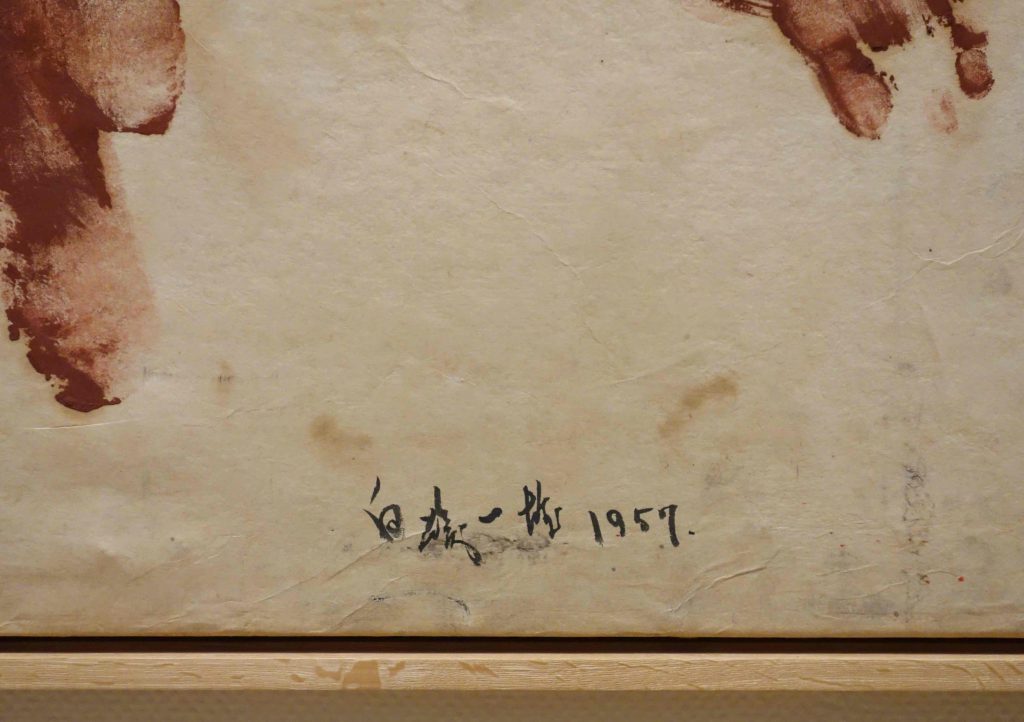
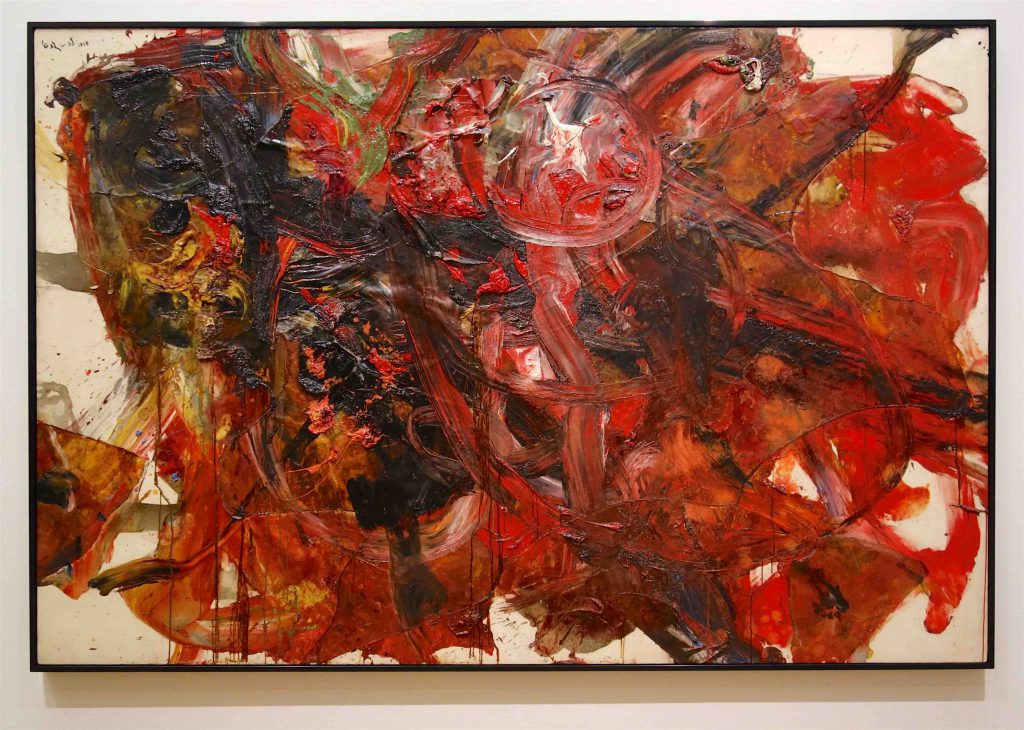

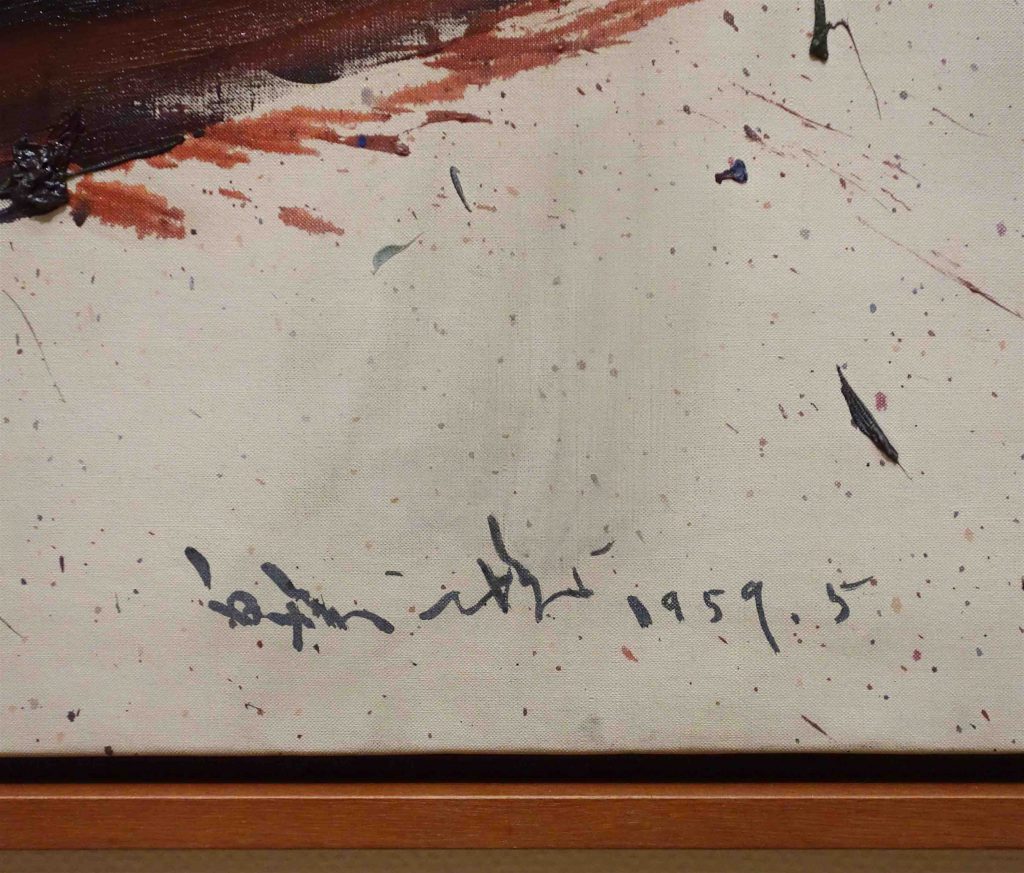
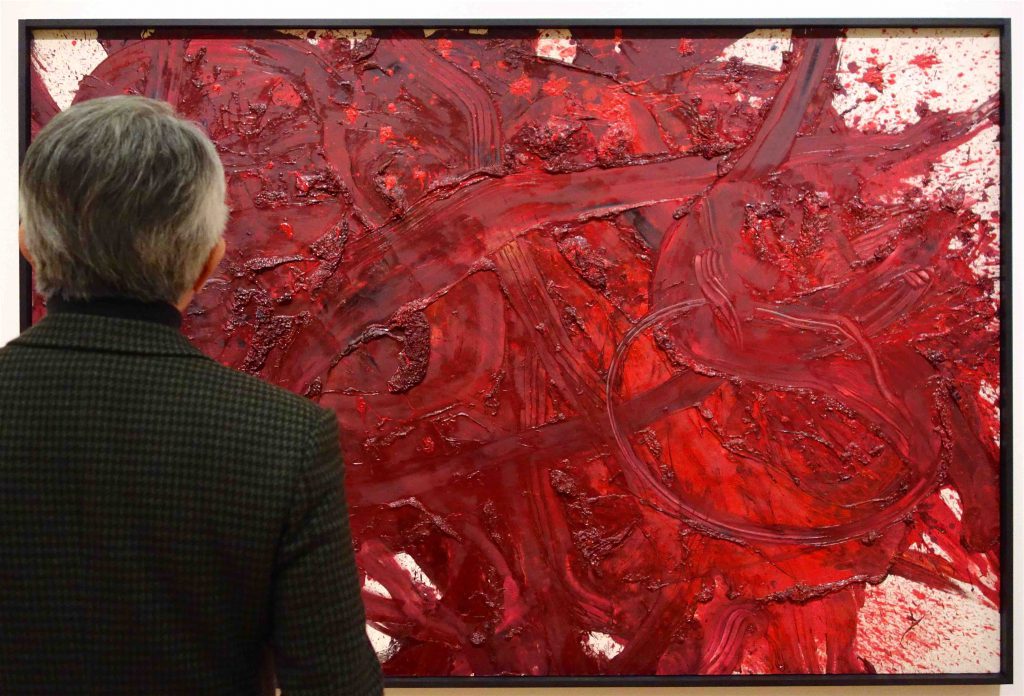
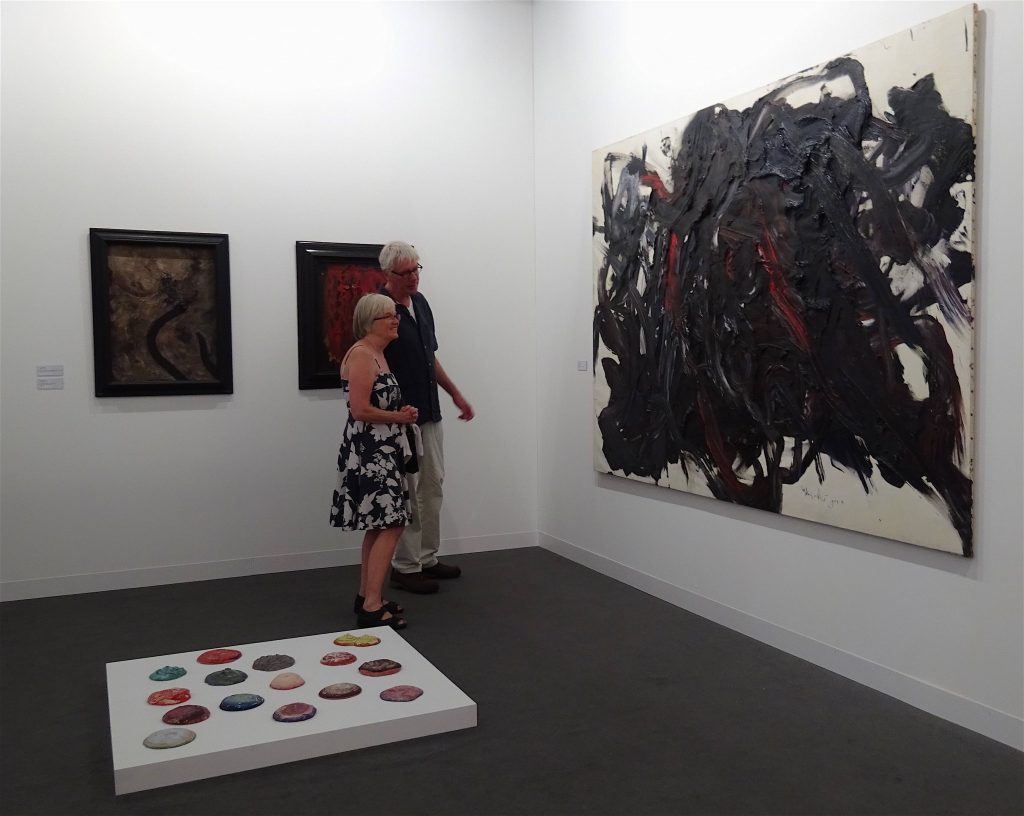
白髪一雄 SHIRAGA Kazuo “Untitled” 1959, Oil on canvas, 182.5 x 272.5 cm (Art Basel 2017)
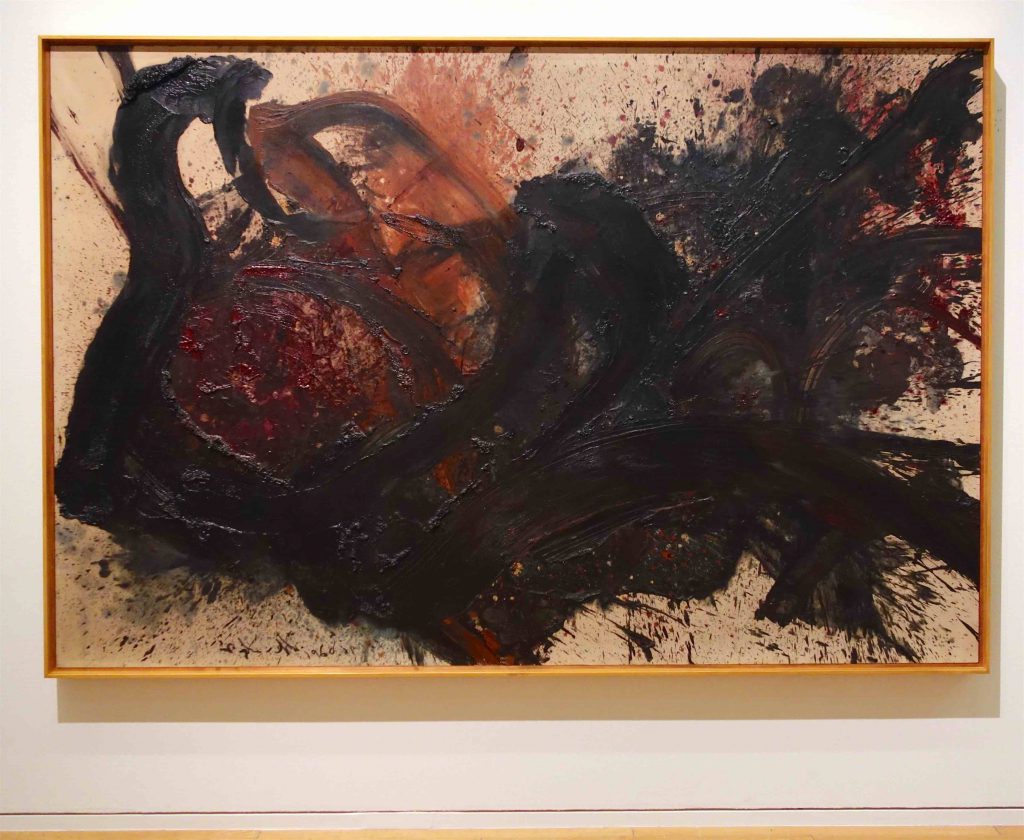
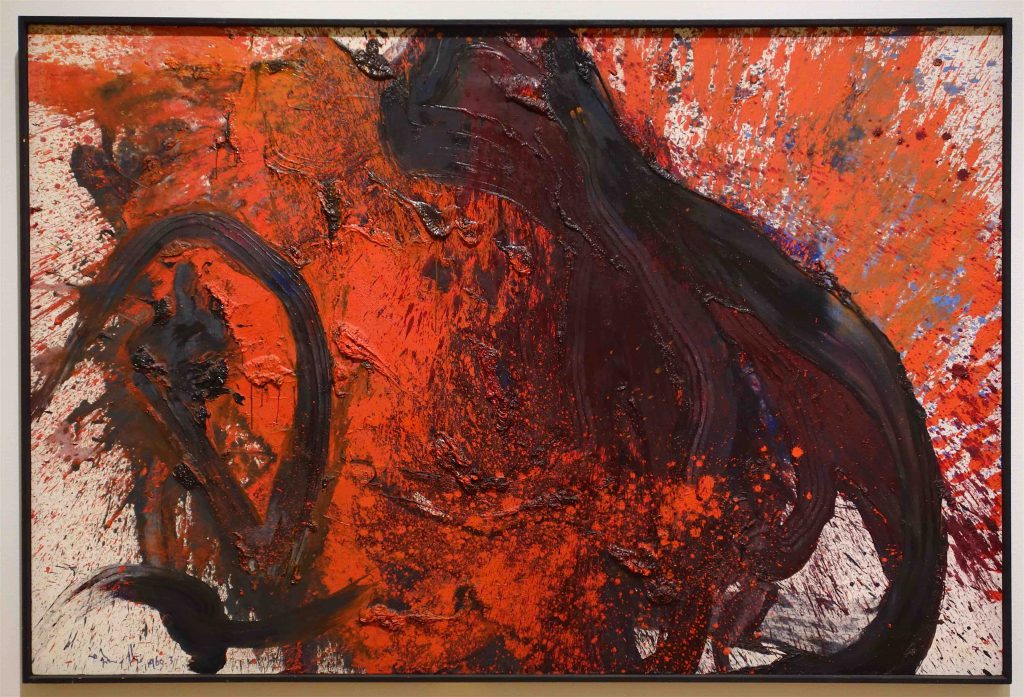
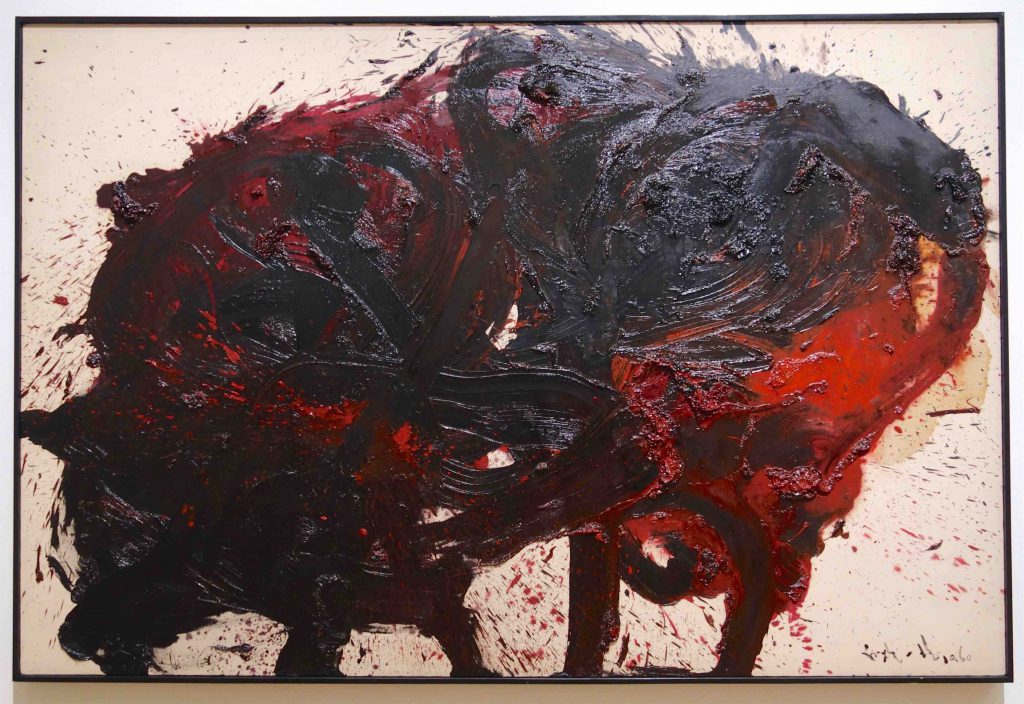

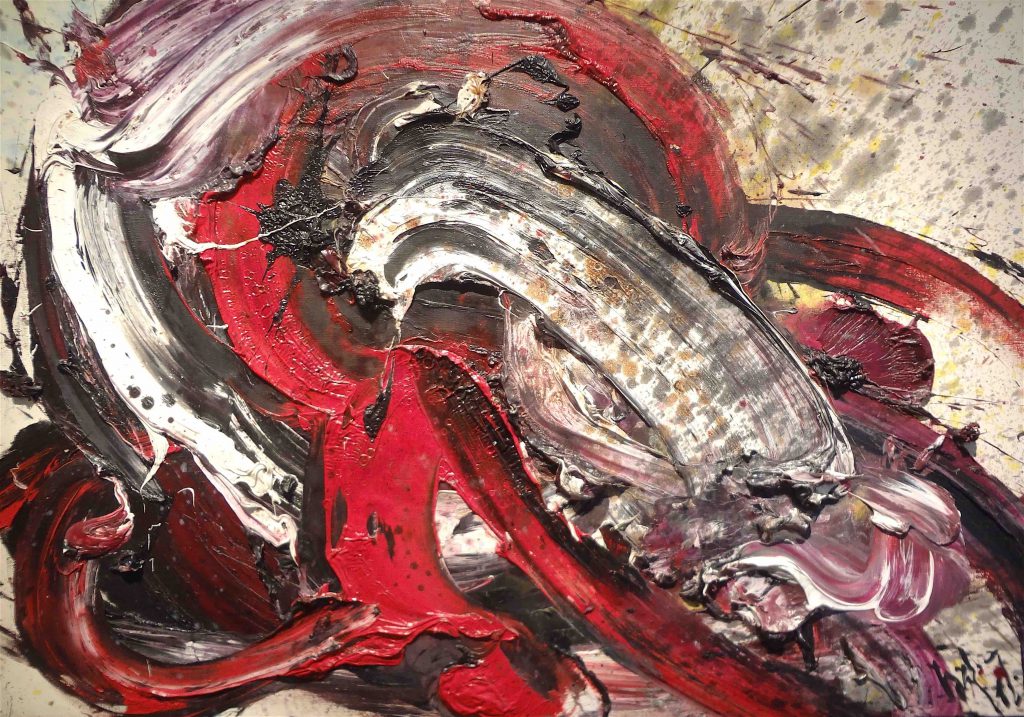

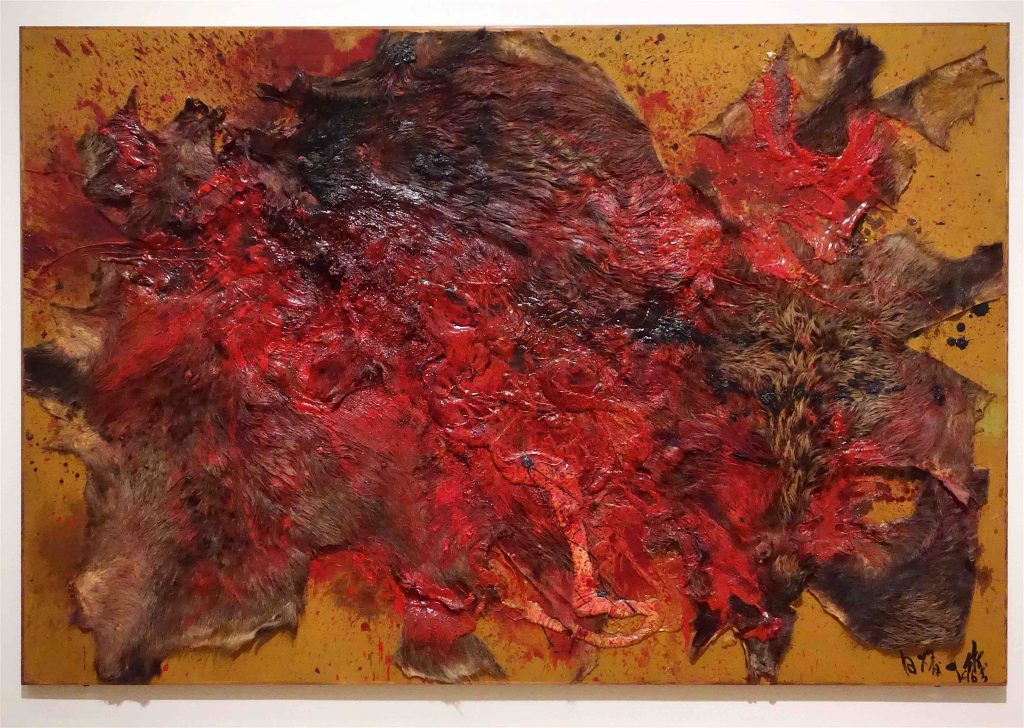

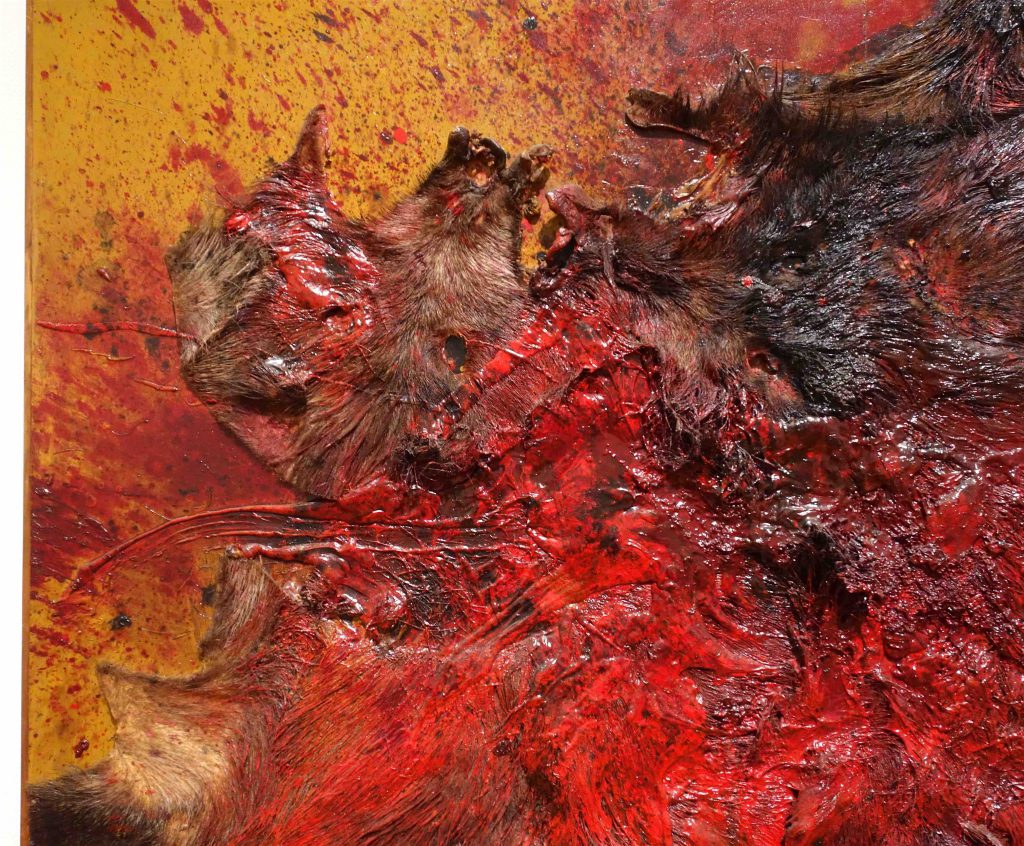

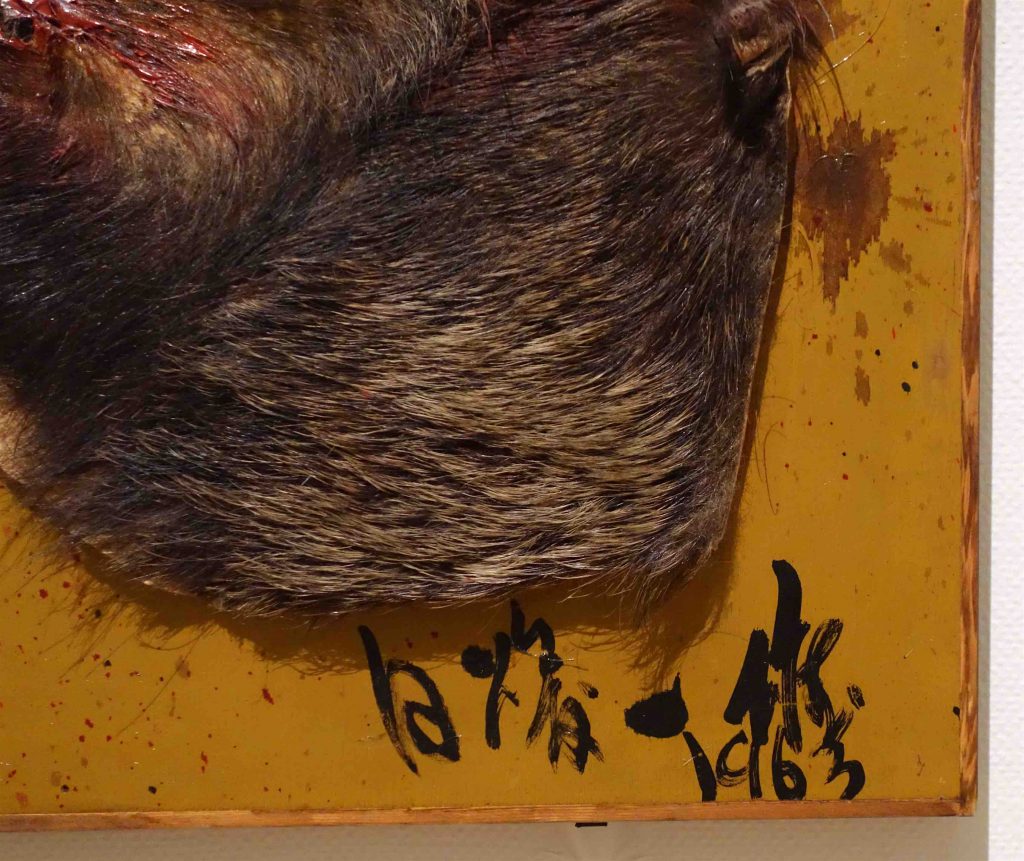
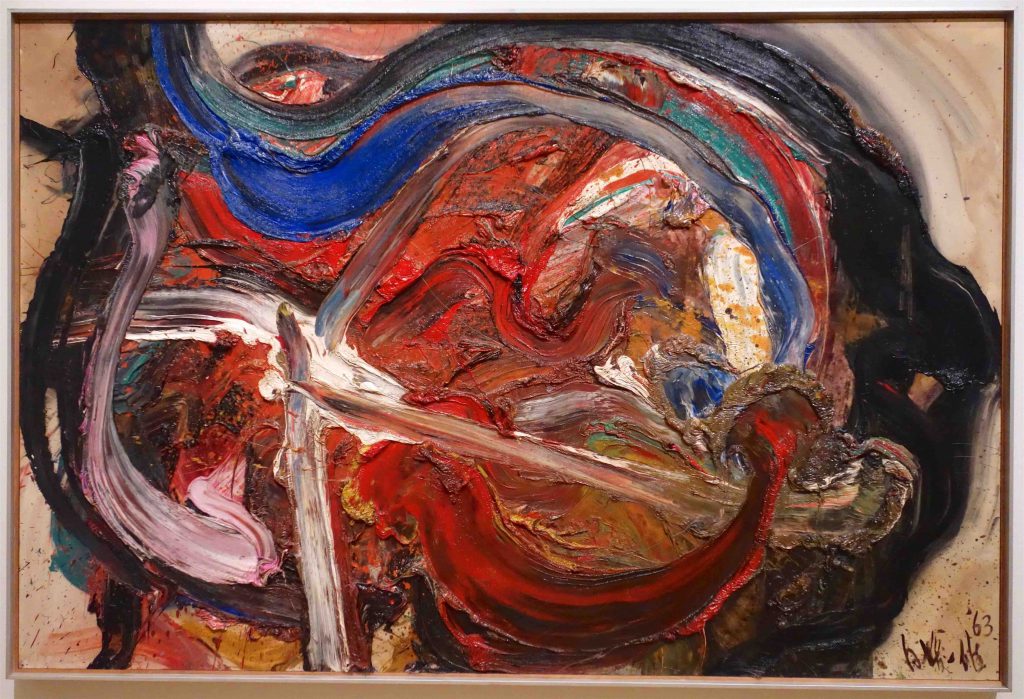

Tenkeisei-Hemmei-Sanro-a-hero-of-a-Chinese-story-1964-Oil-on-canvas-1024x715.jpg)
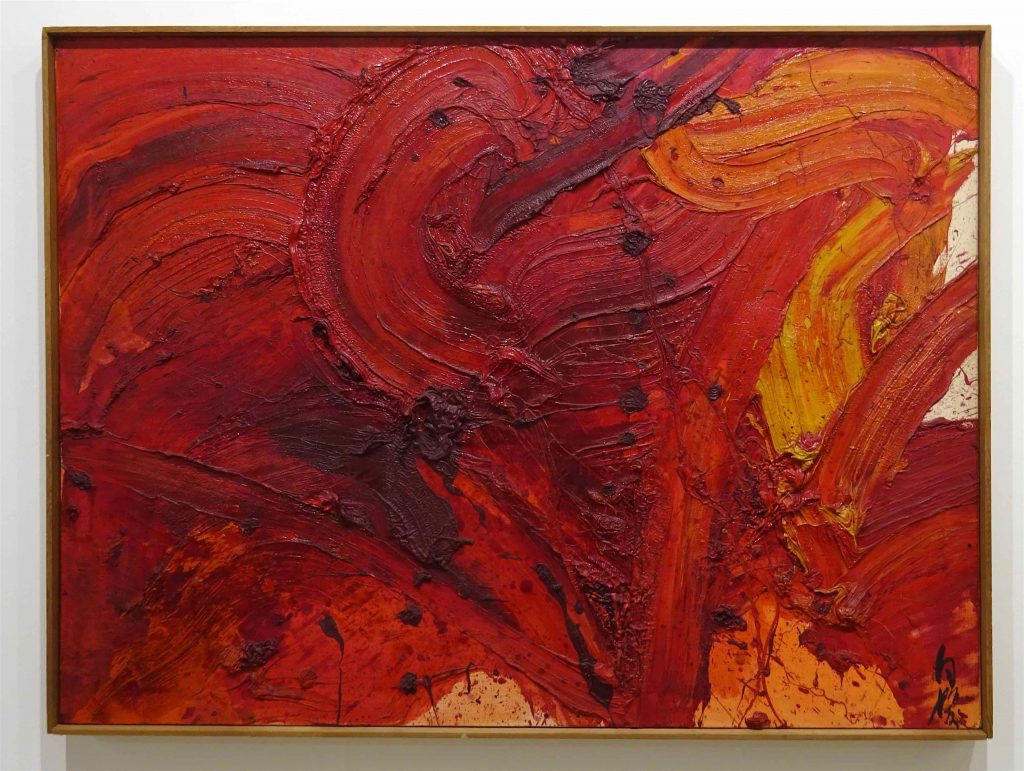
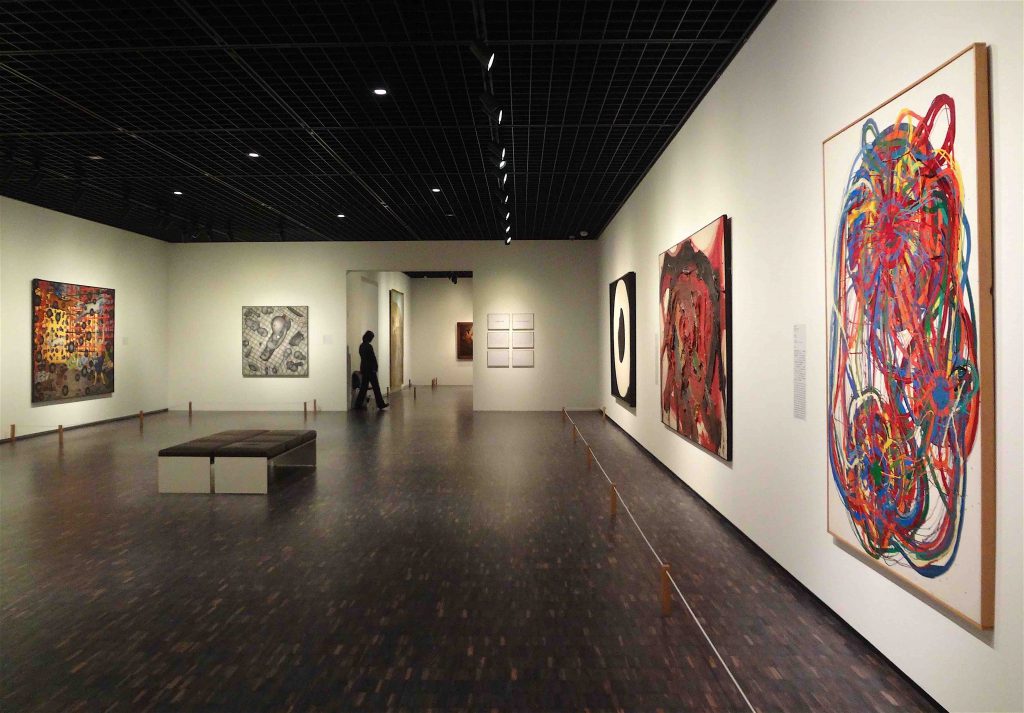
From left to right 左側から:石井 茂雄 ISHII Shigeo 戒厳状態 State of Martial Law 1965、河原温 KAWARA On 孕んだ女 Pregnant Woman 1954、吉原 治良 YOSHIHARA Jiro 黒地に白 White on Black 1965、白髪一雄 SHIRAGA Kazuo 天慧星 命三郎(水滸伝豪傑の内) Hemmei Sanro, a hero of a Chinese story 1964、田中敦子 TANAKA Atsuko 作品 66-SA Work 66-SA 1966
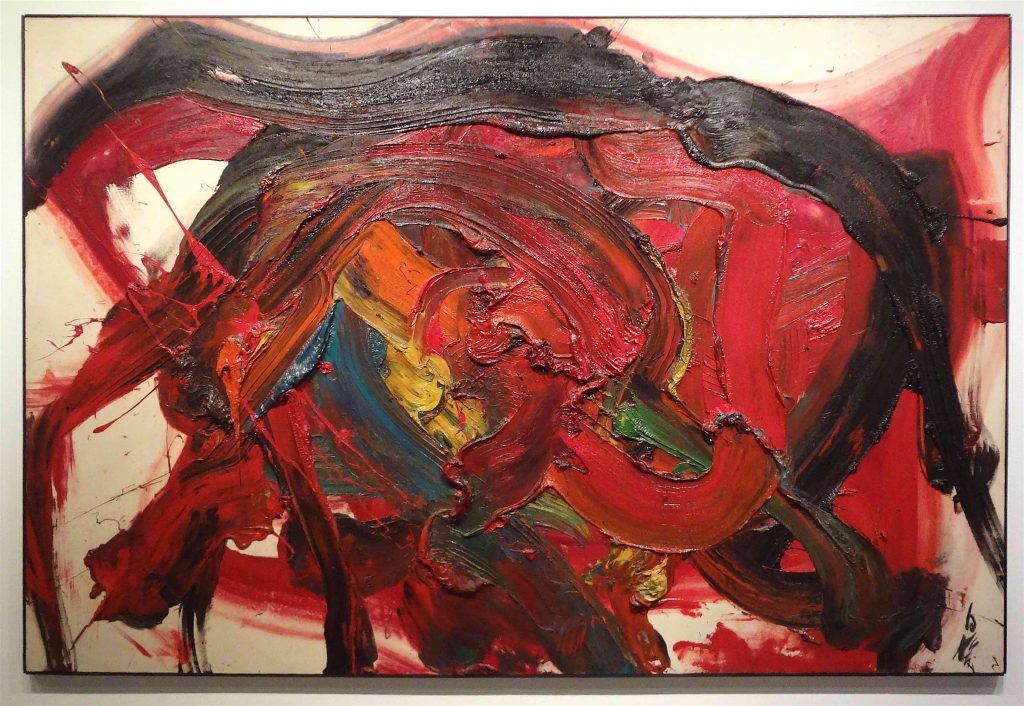

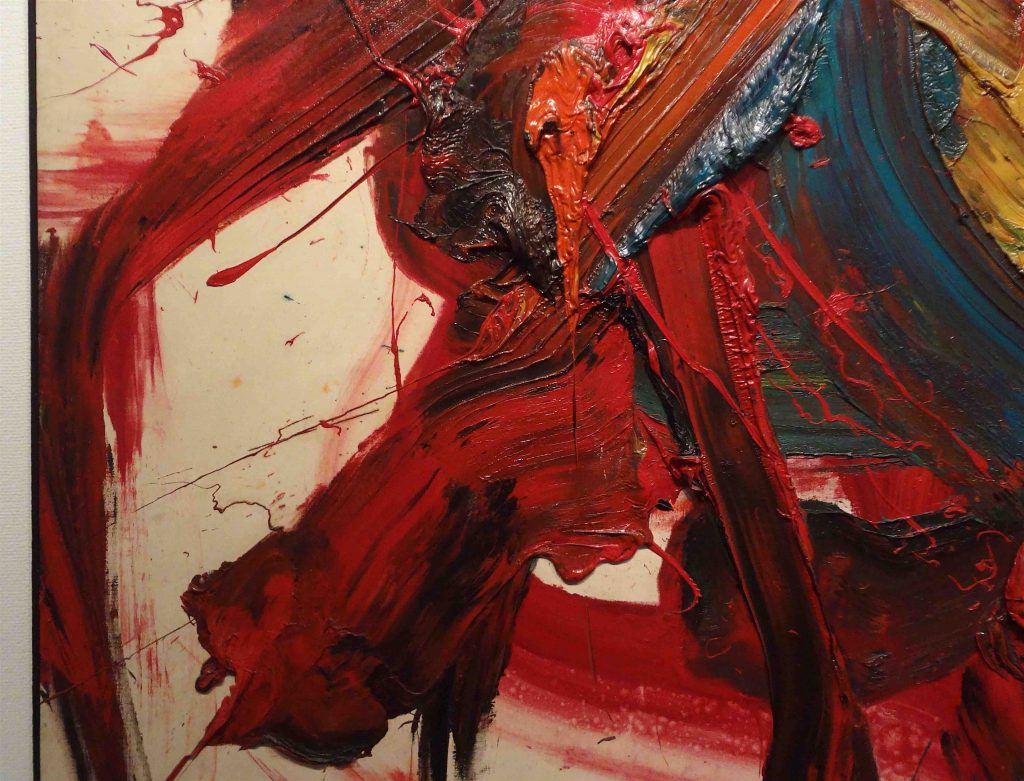

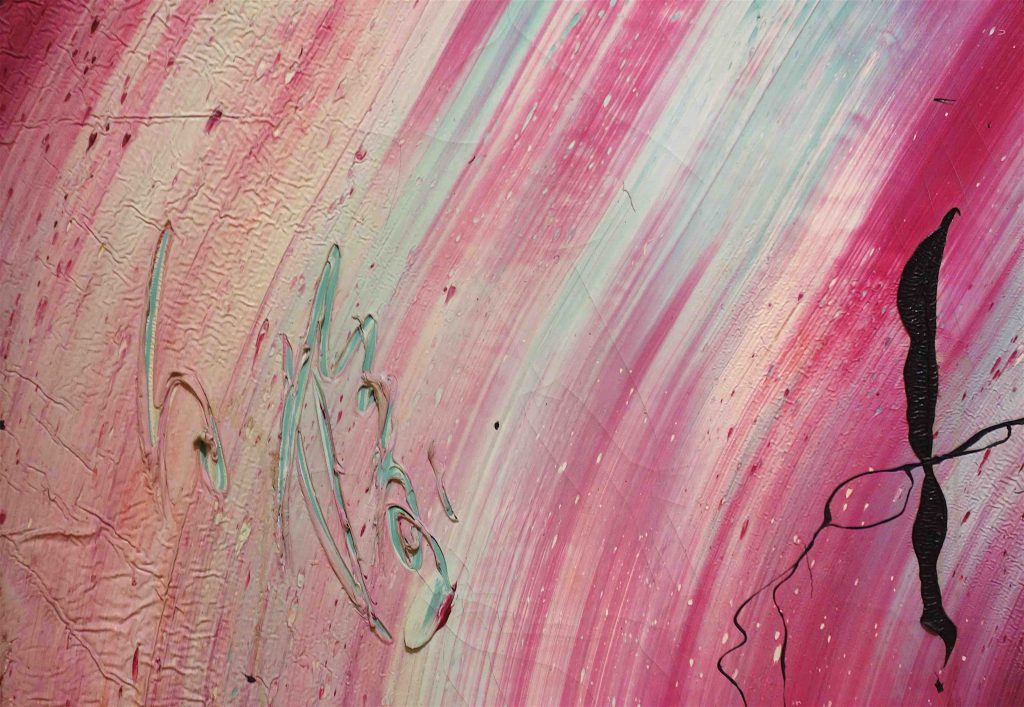

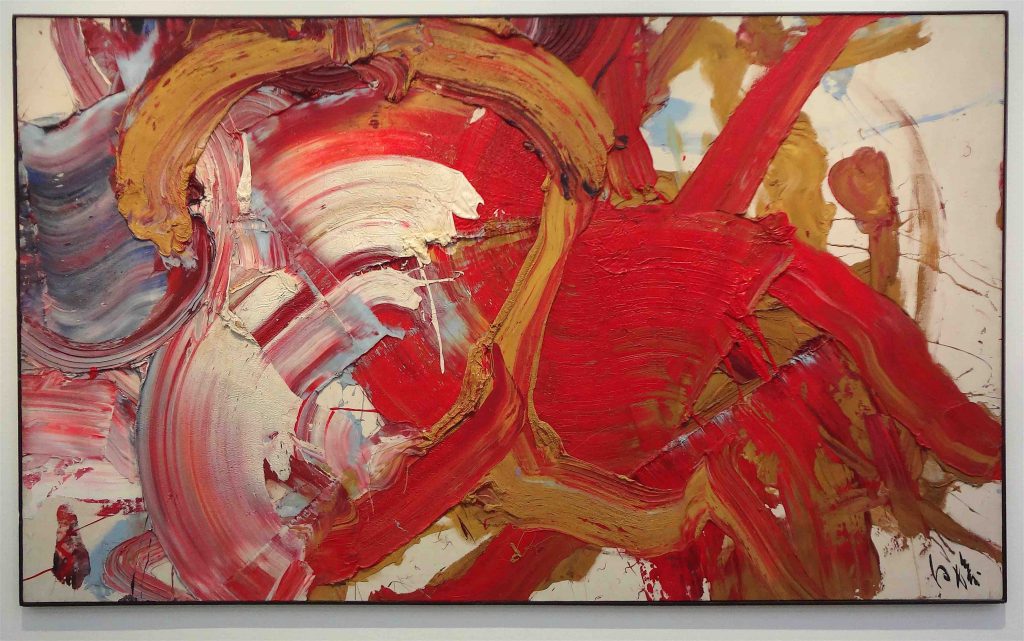

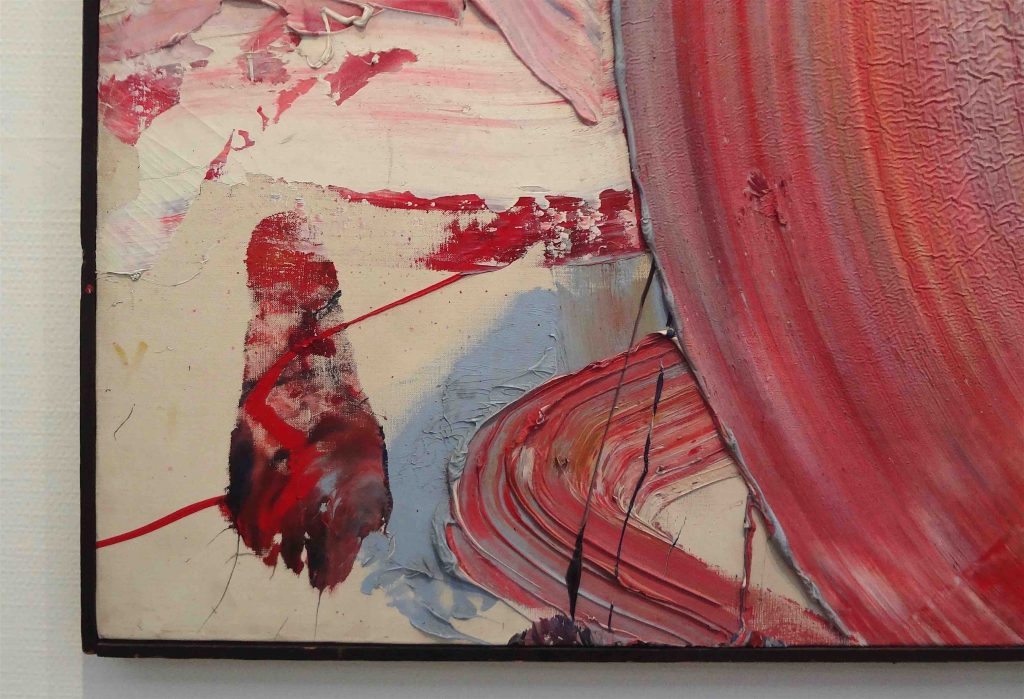
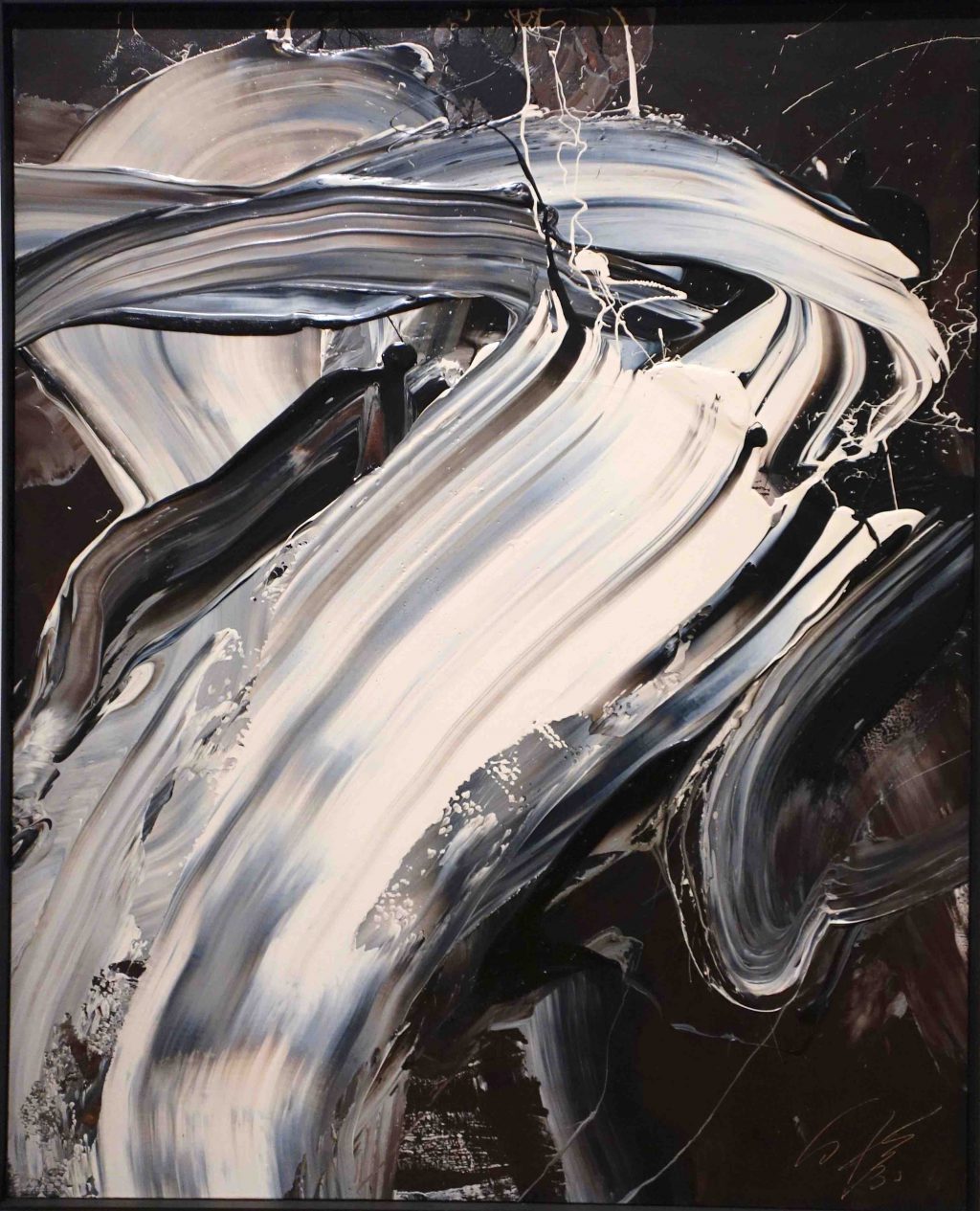
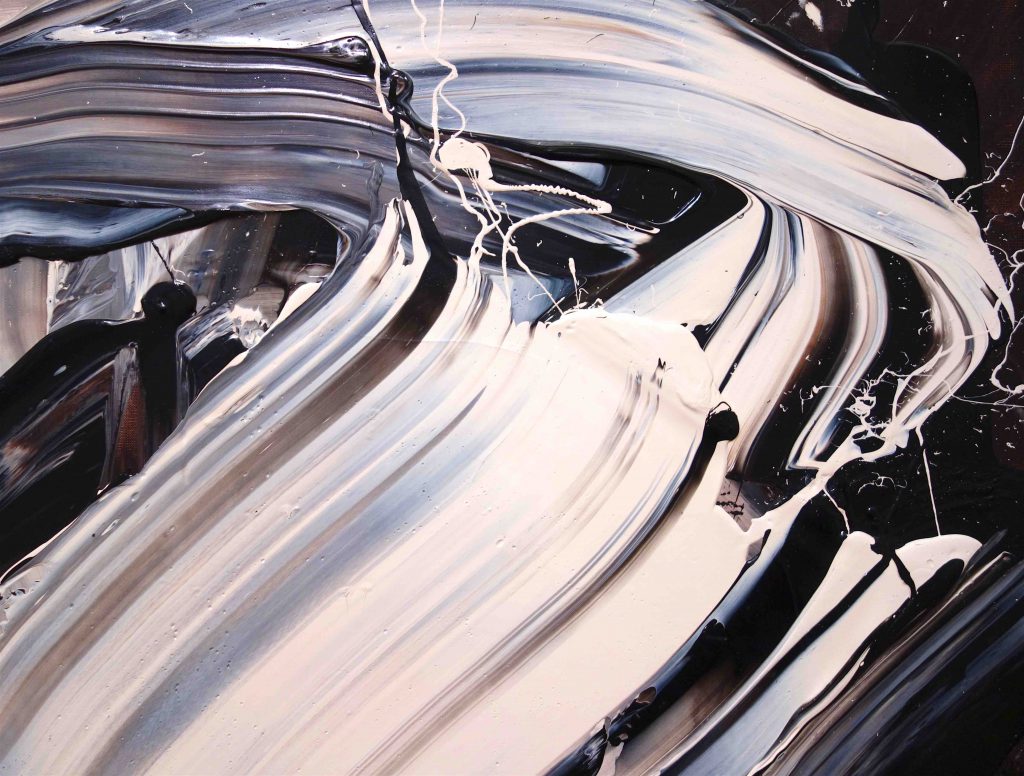

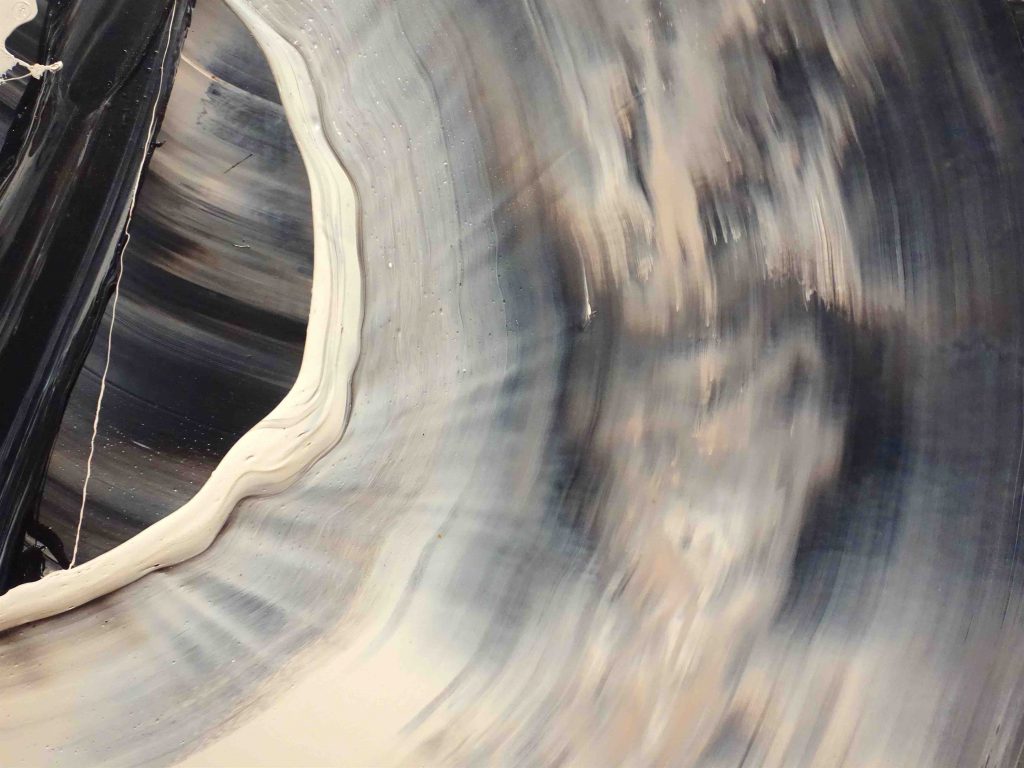
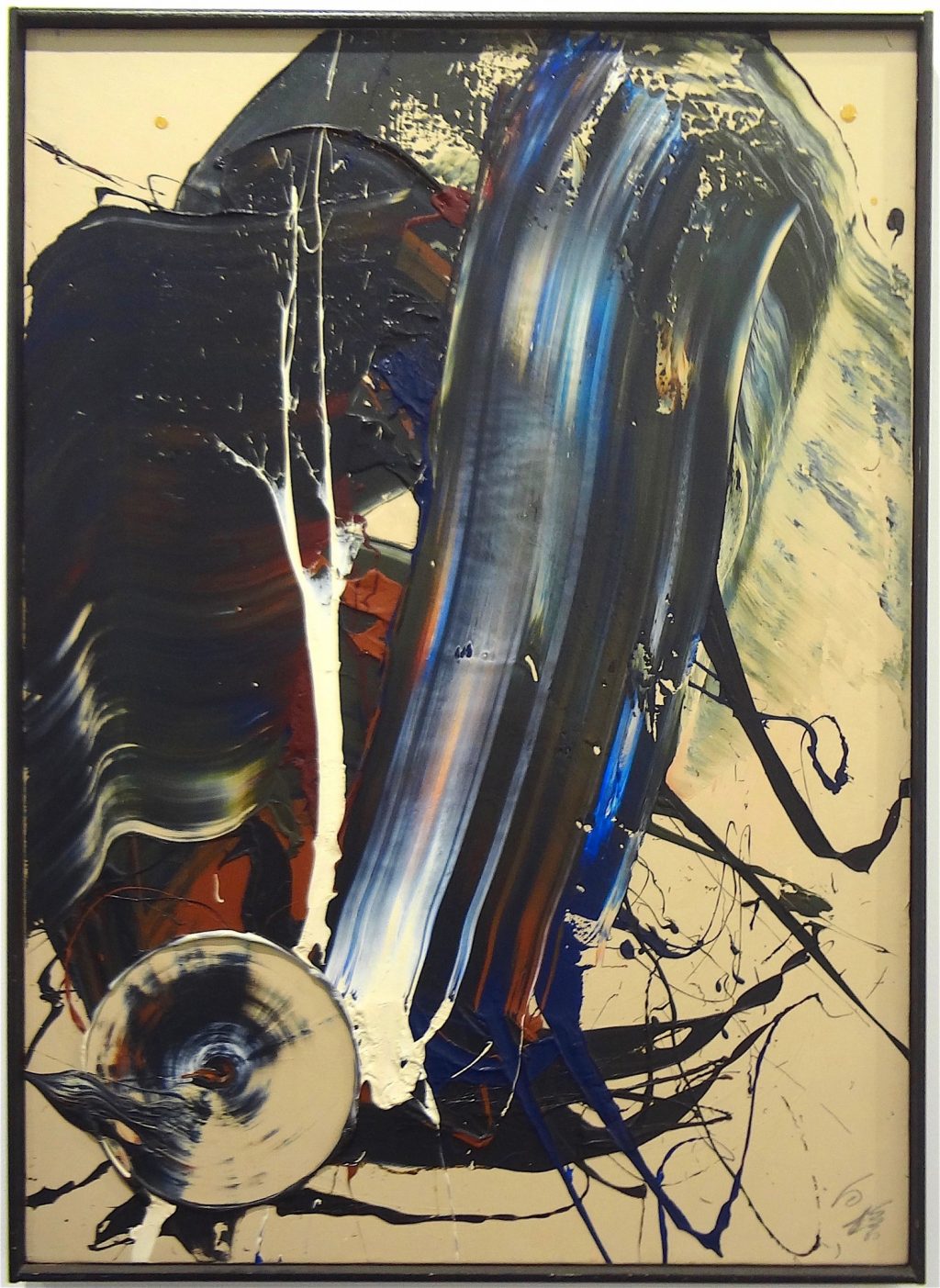
白髪一雄 SHIRAGA Kazuo “Monju Boasts San” 1975, Oil on canvas, 91 x 65.2 cm (Art Basel 2015)
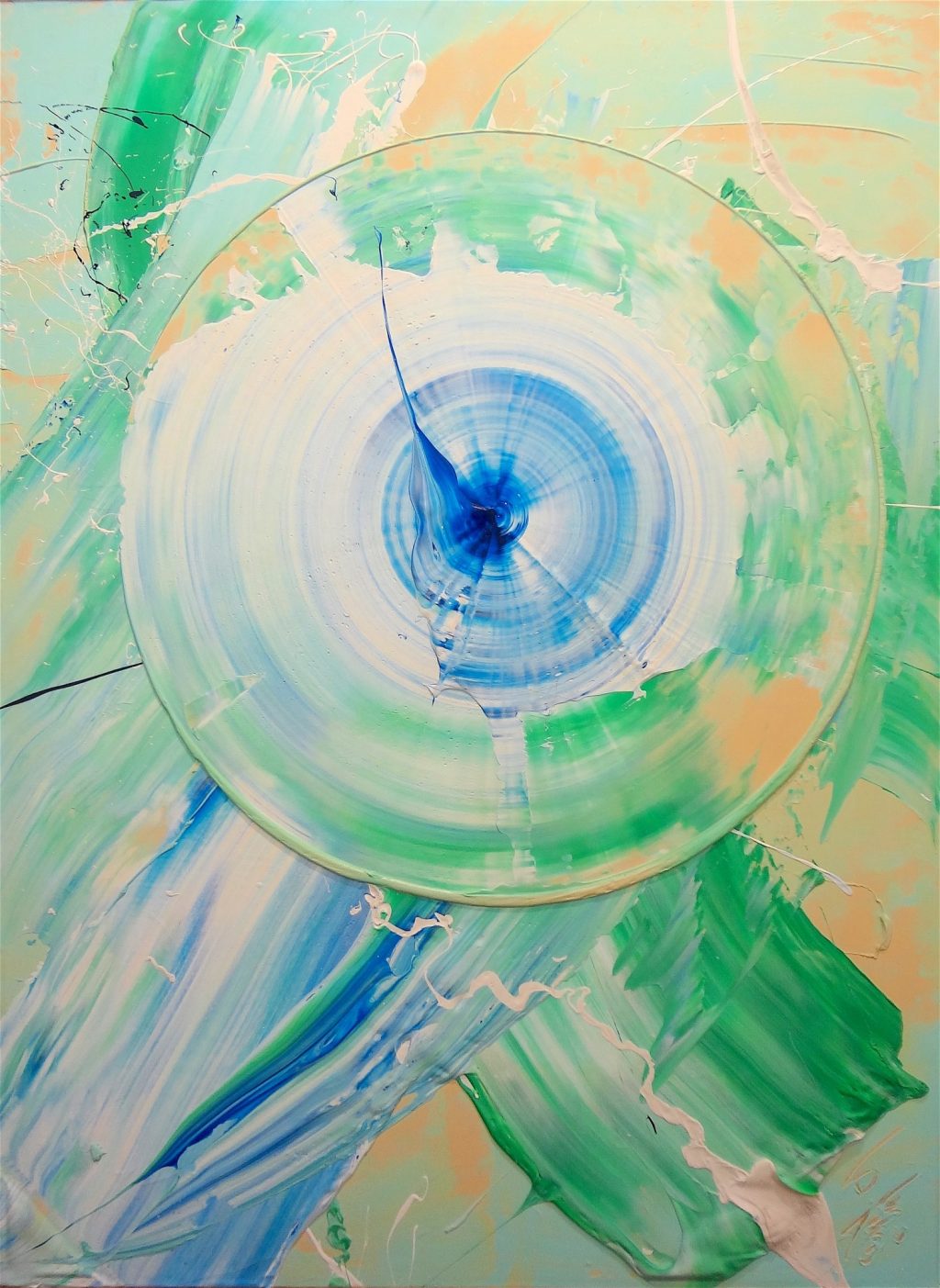
白髪一雄 SHIRAGA Kazuo “Hunpo” 1975, Oil on canvas, 130.2 x 97 cm (Art Basel 2015)

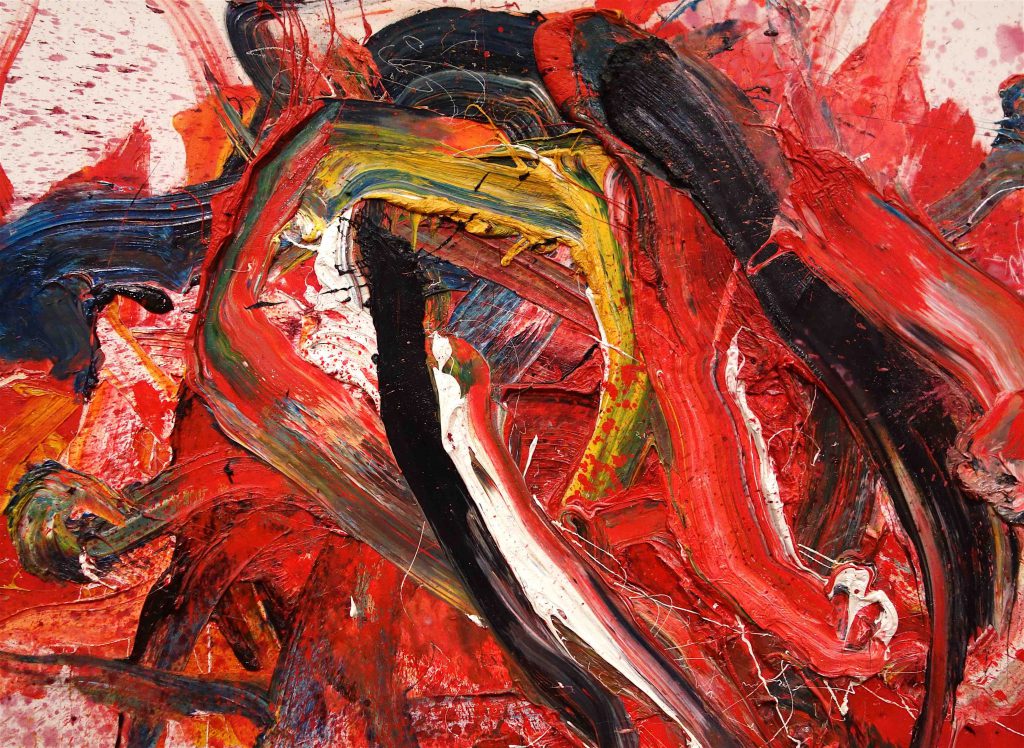

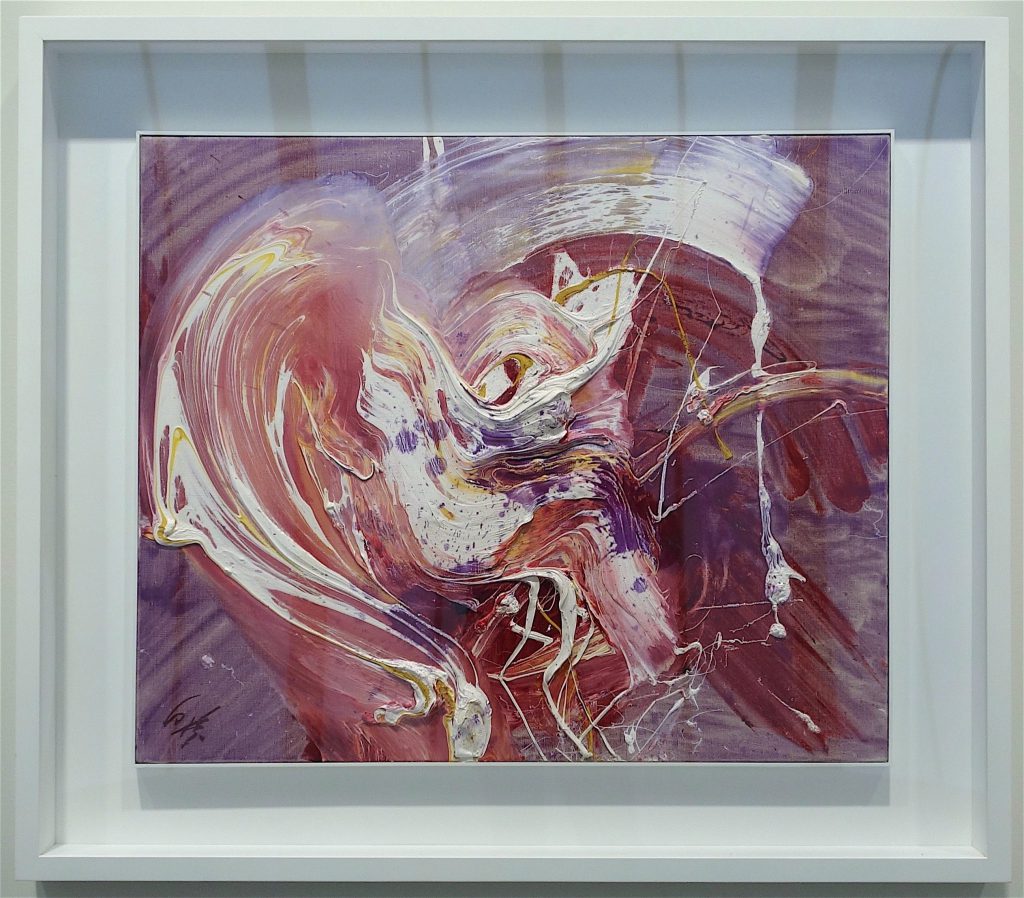
(Fergus McCaffrey, Tokyo 2019)
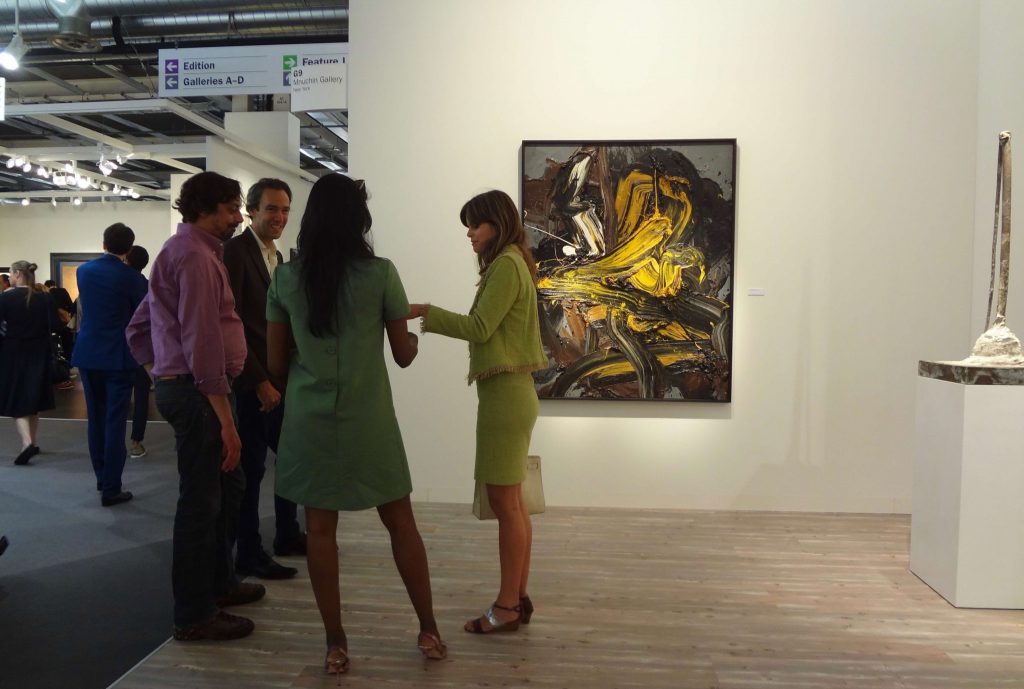
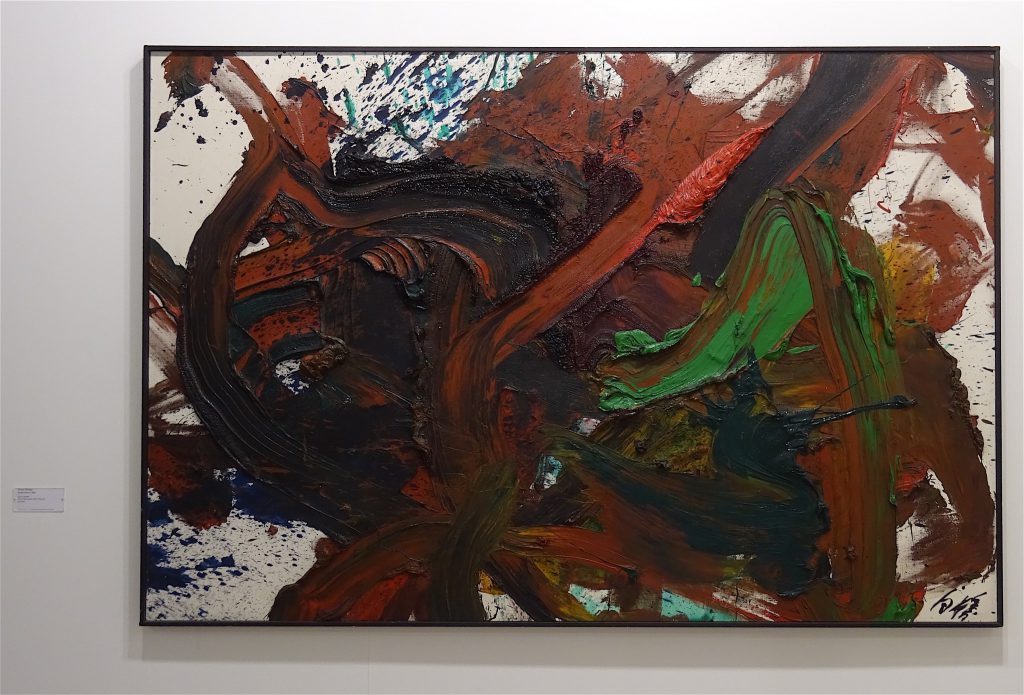

(Fergus McCaffrey, Tokyo 2019)
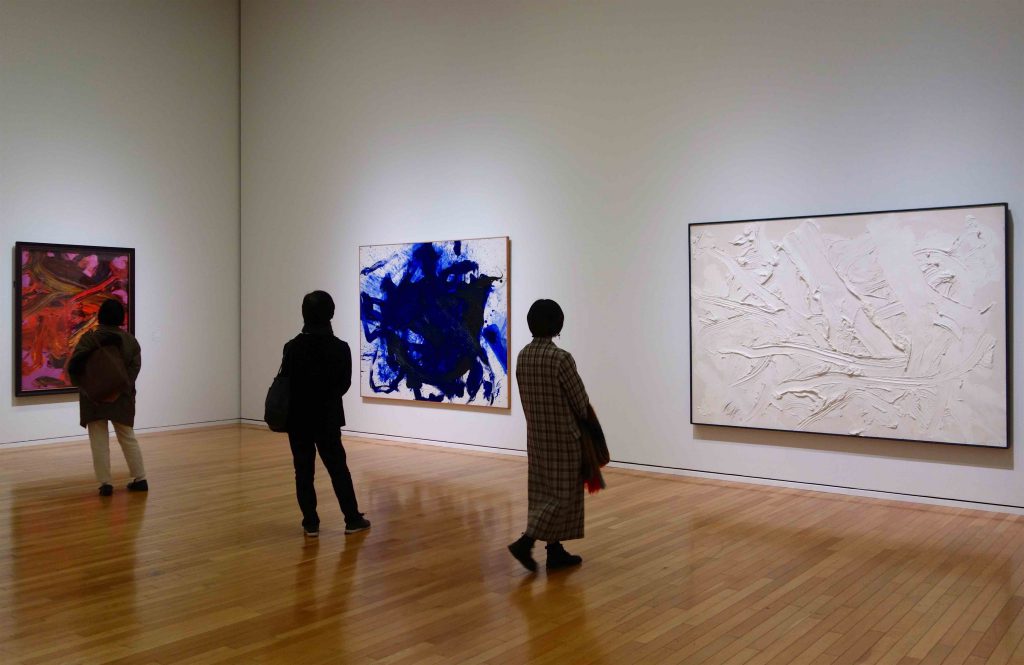

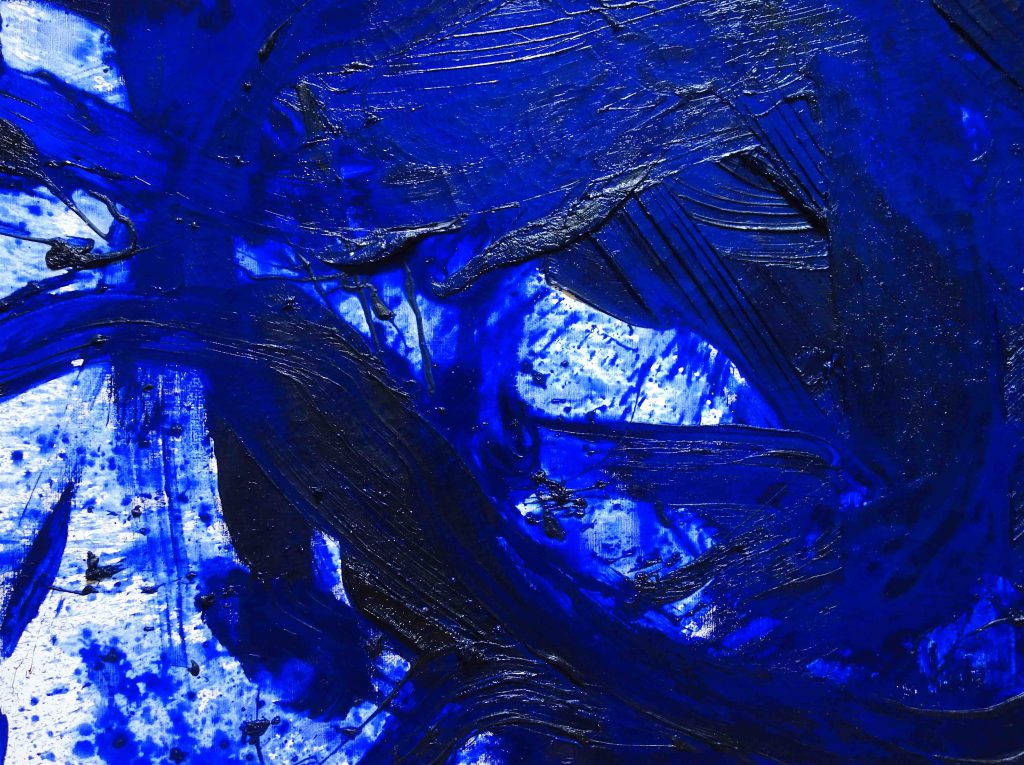
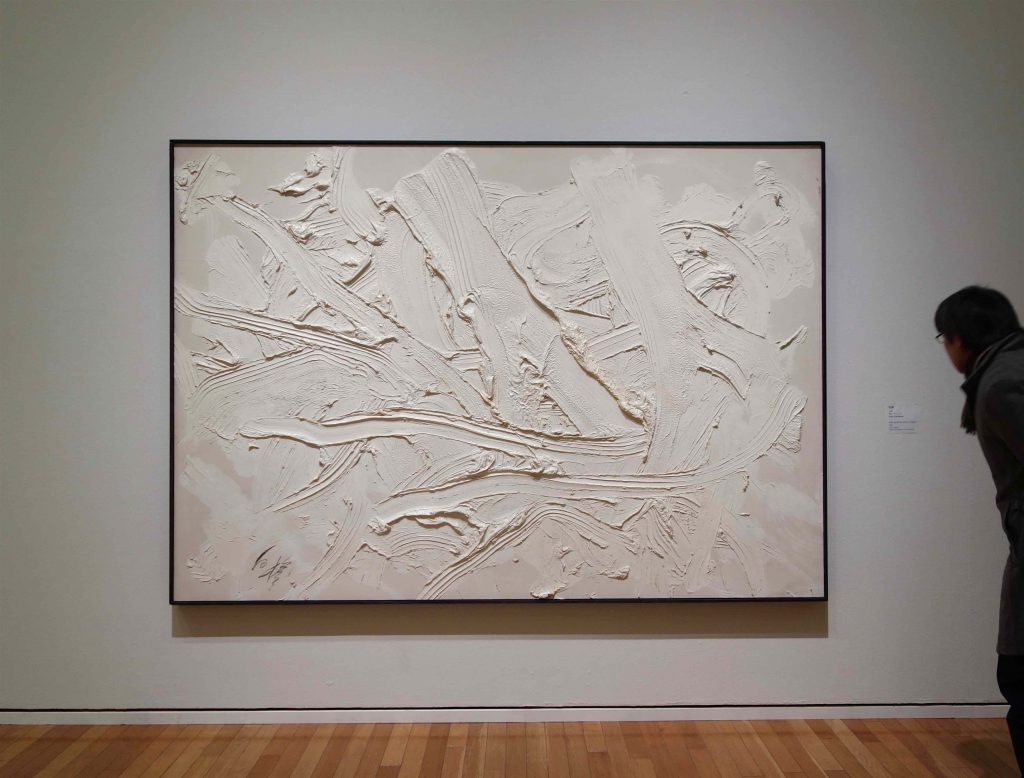

(Fergus McCaffrey, Tokyo 2019)
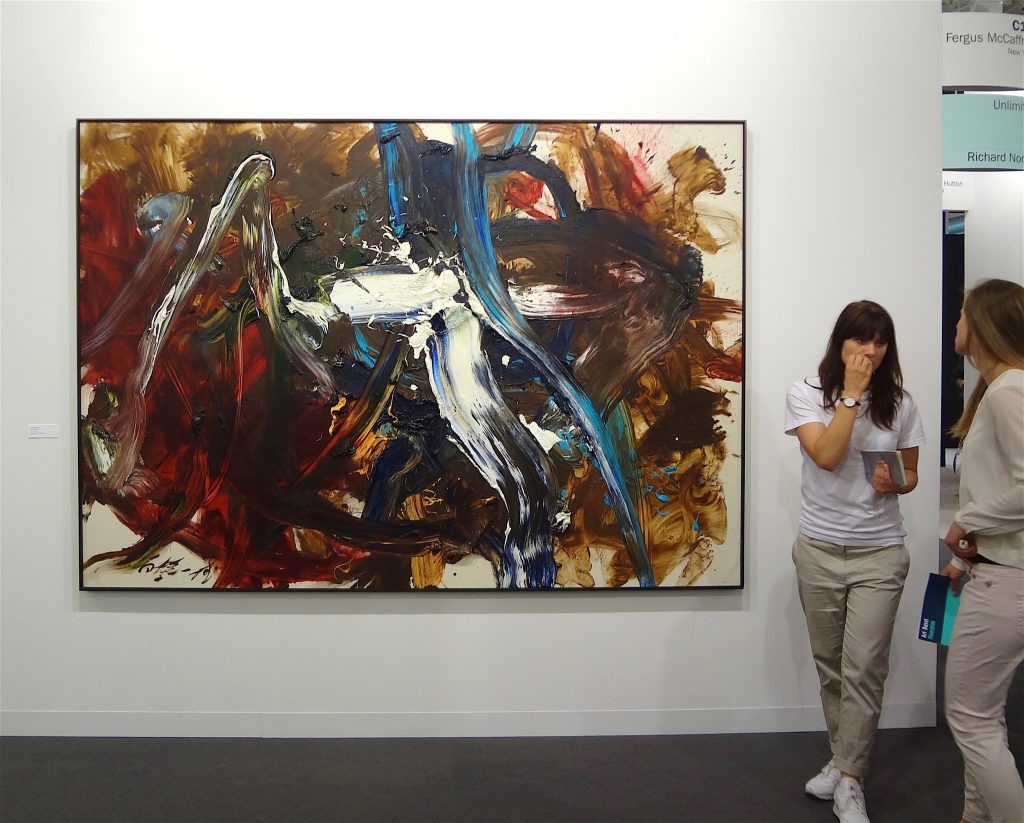
白髪一雄 SHIRAGA Kazuo “Ryusen” 1991, Oil on canvas, 182 x 260 cm (Art Basel 2014)


(Fergus McCaffrey, Tokyo 2019)
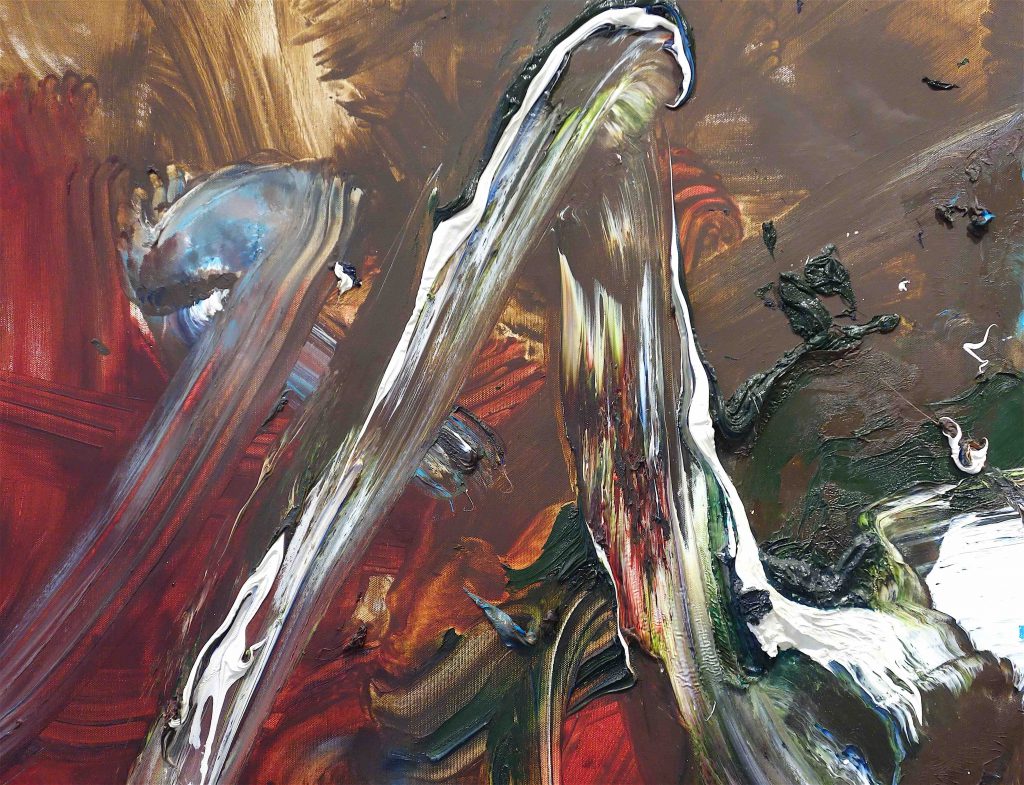
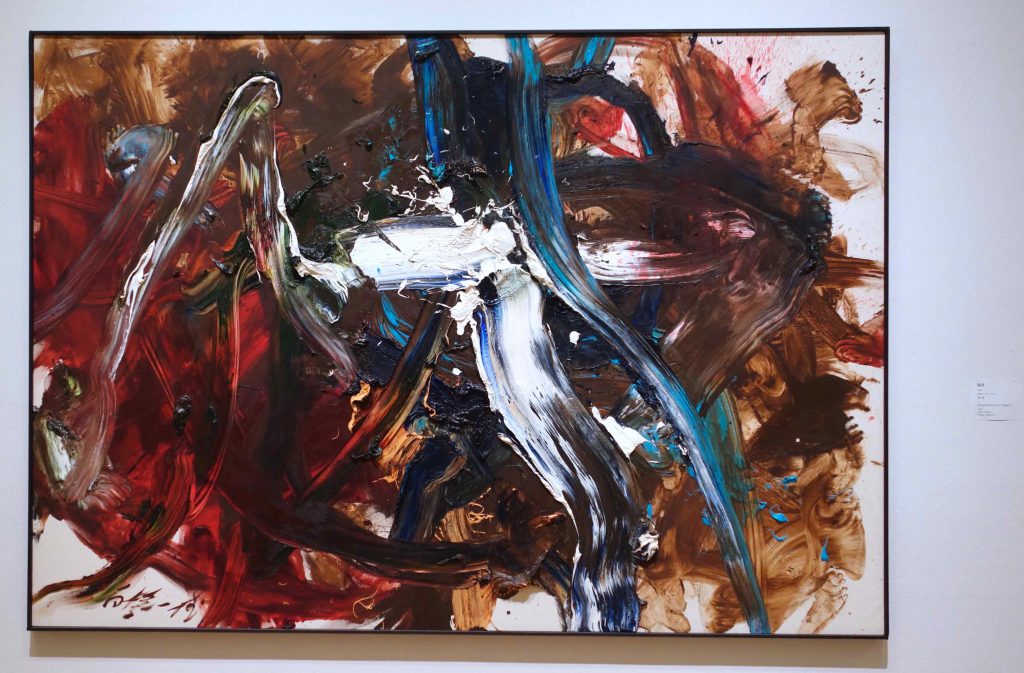
(Tokyo Opera City Art Gallery 2020)
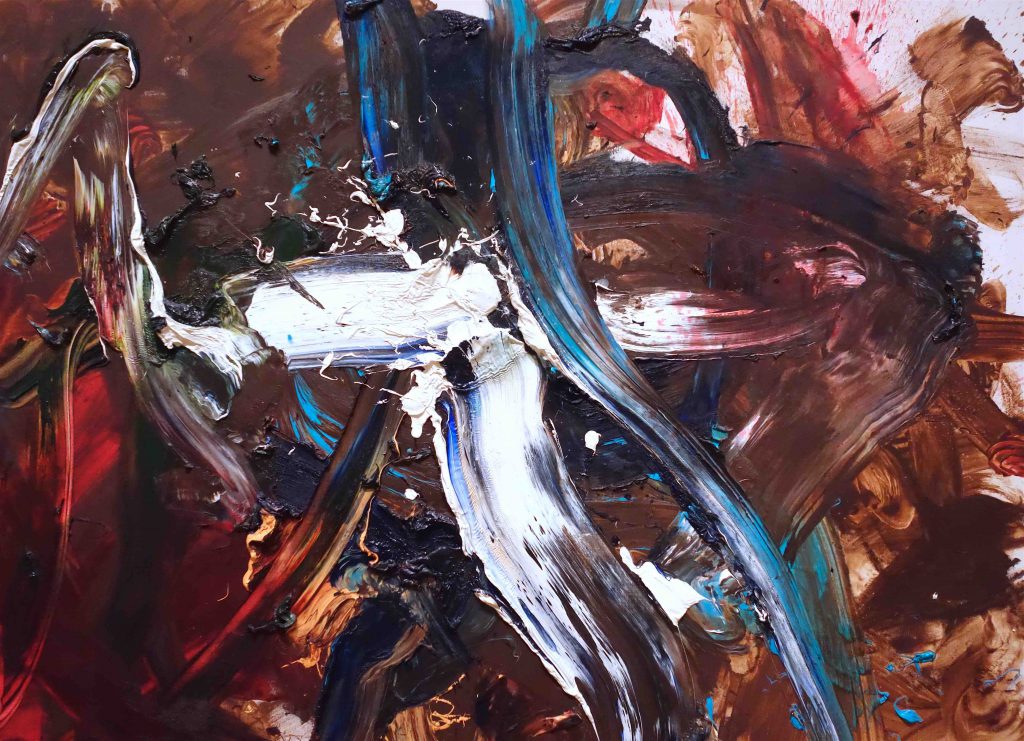
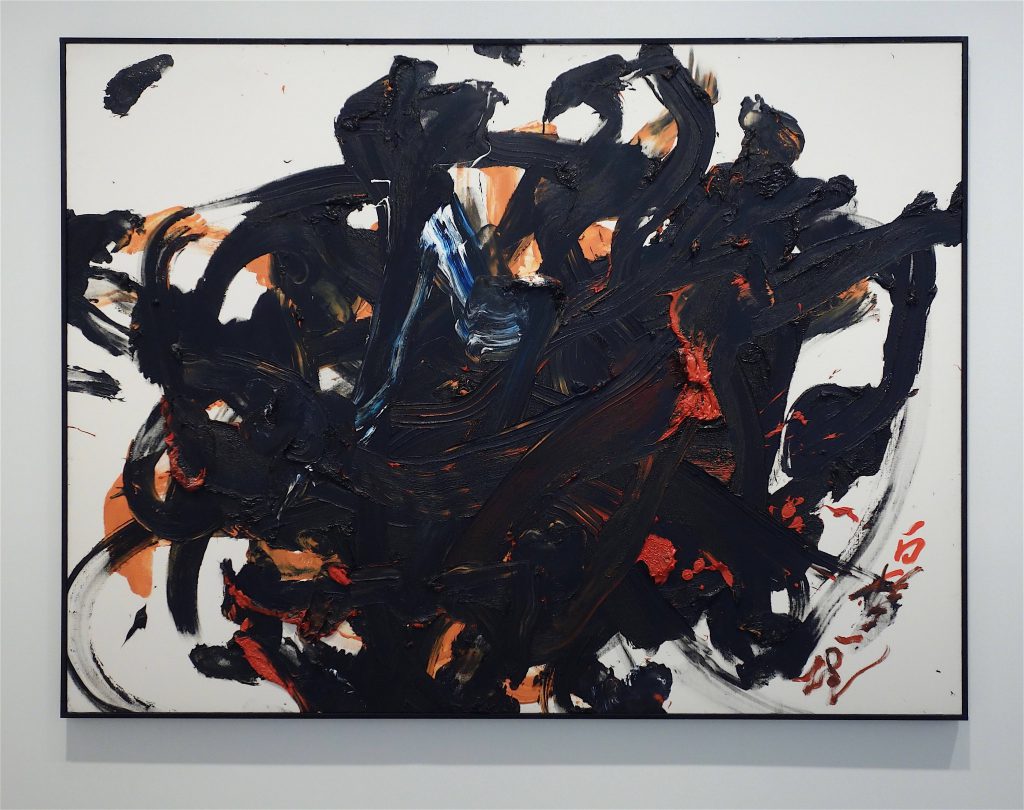
(Fergus McCaffrey, Tokyo 2019)
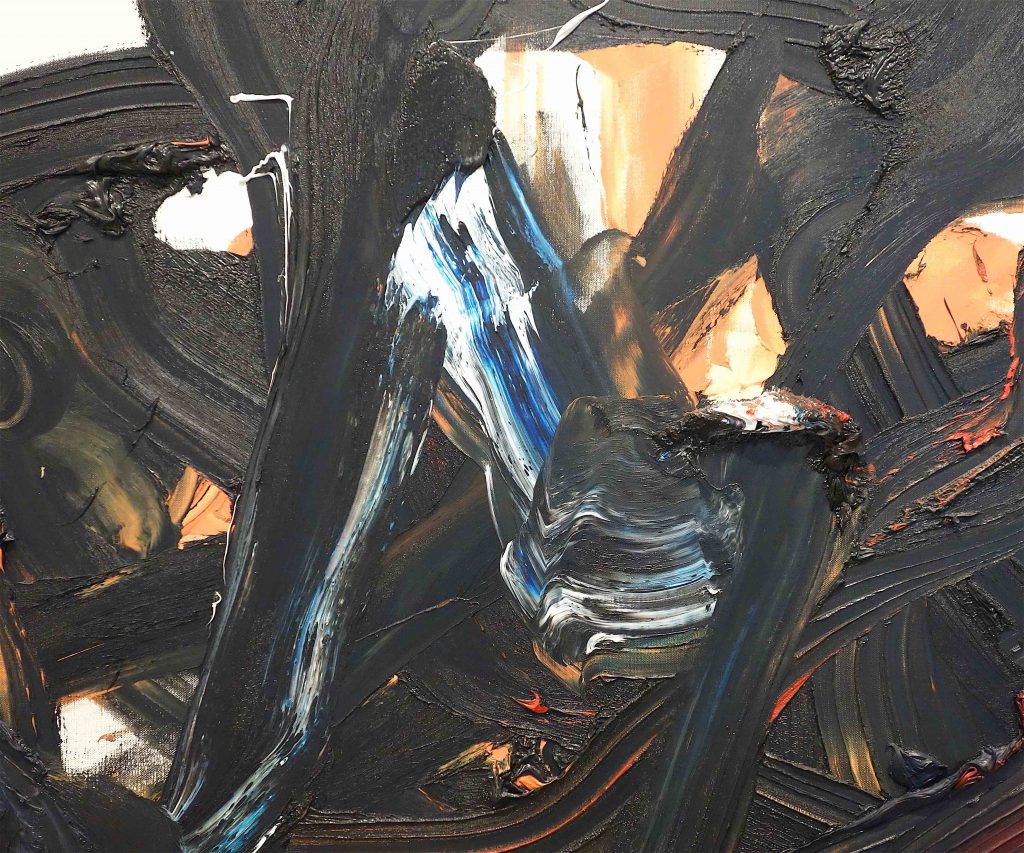
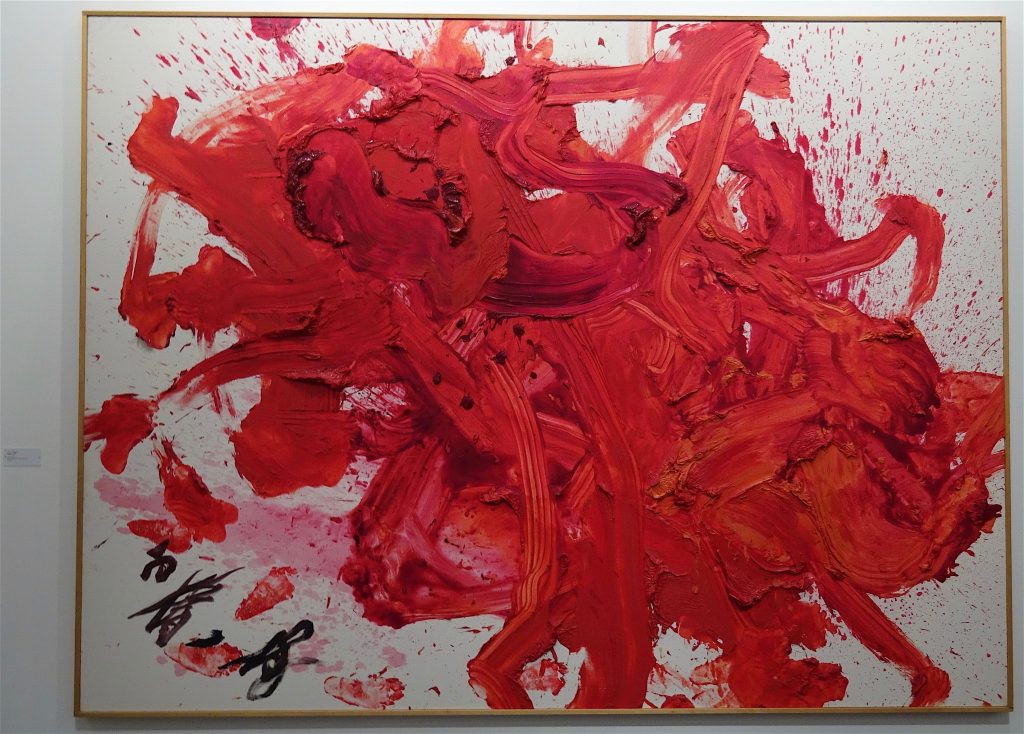
白髪一雄 SHIRAGA Kazuo “Sekirai” 1997, Oil on canvas, 219 x 291 cm (Art Basel 2017)



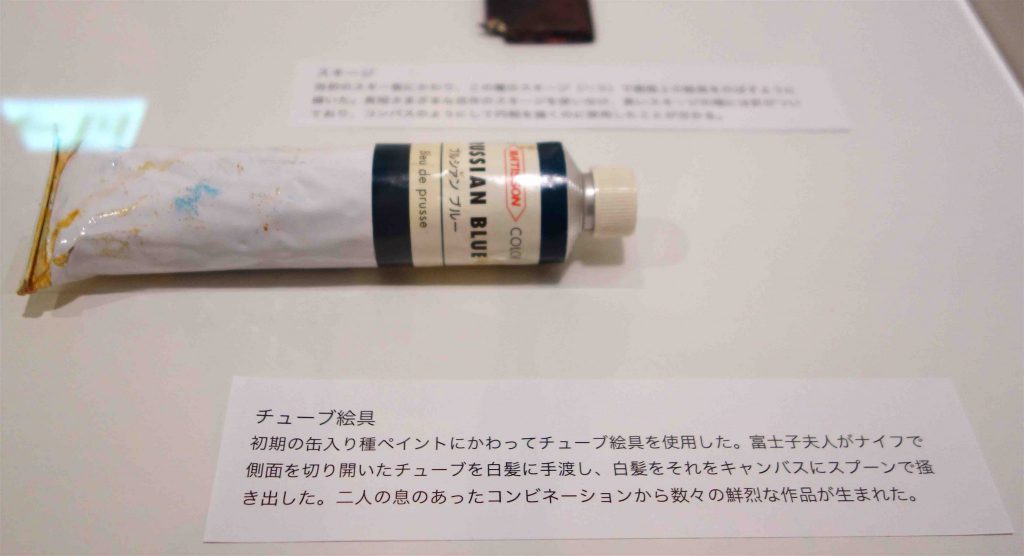
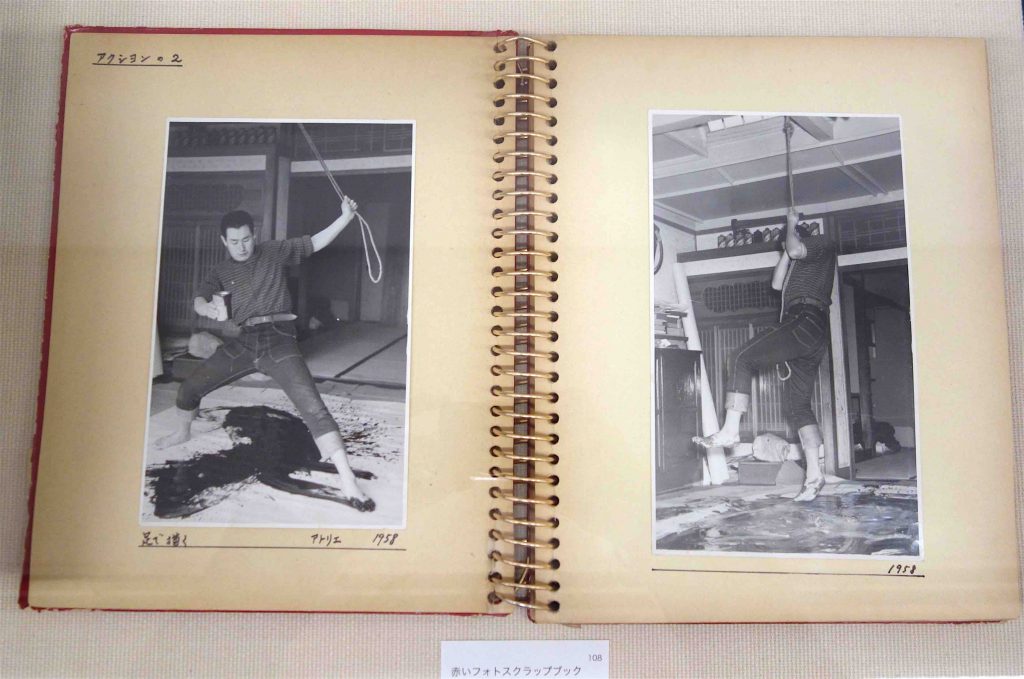
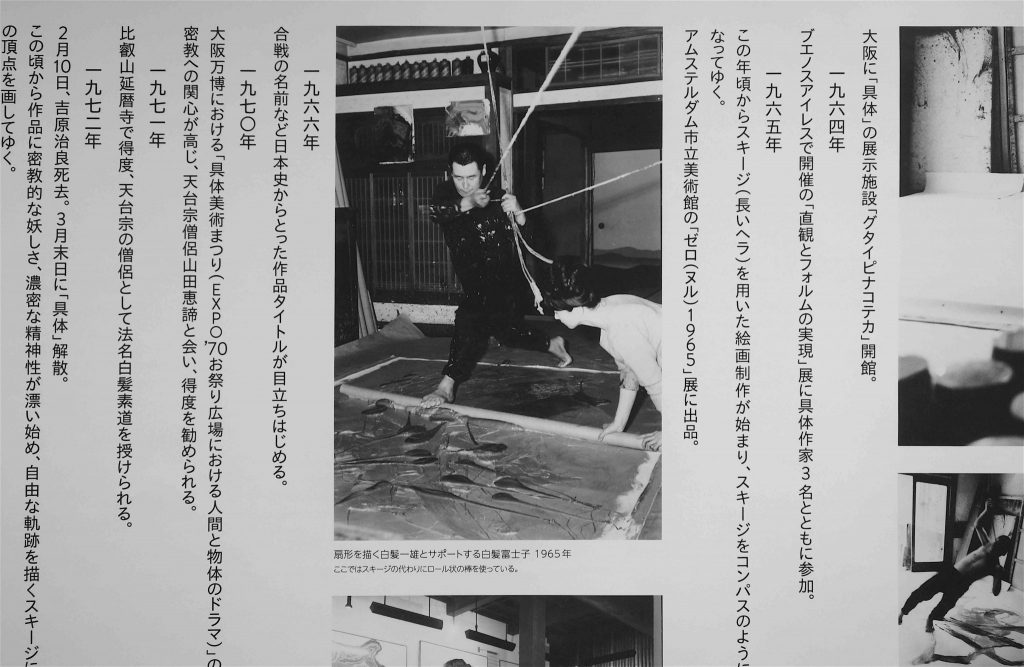
In case of interest, further recommendations about artists etc.
現代美術のスター 長島有里枝 @ MAHO KUBOTA GALLERY
Contemporary Art Star NAGASHIMA Yurie @ MAHO KUBOTA GALLERY
https://art-culture.world/articles/contemporary-art-star-nagashima-yurie-長島有里枝/
or
原口典之と関根伸夫のアート実践を考える
Thoughts on the artistic practice of HARAGUCHI Noriyuki and SEKINE Nobuo
https://art-culture.world/articles/haraguchi-noriyuki-sekine-nobuo-原口典之-関根伸夫/
or
塩田千春作:孤独と生命線の神秘な相関巣 (過去サイト・アーカイブの再投稿、2013年2月3日)
SHIOTA Chiharu: Mysterious Nest-specific Correlations Between Loneliness and Lifelines (repost from the archive, 2013/2/3)
https://art-culture.world/articles/shiota-chiharu-shiota-塩田千春/
or
優作「ディスリンピック2680」@ 風間サチコ展・「原爆の図 丸木美術館」
KAZAMA Sachiko’s Excellent “Dislympia 2680” @ Hiroshima Panels – Maruki Museum
https://art-culture.world/articles/kazama-sachiko-dislympia-2680-hiroshima-panels-maruki-museum/
or
磯谷博史:時差画と虚像を巡る認識論 @ 青山|目黒 (過去サイト・アーカイブの再投稿)
In the Context of Epistemology: ISOYA Hirofumi’s Virtual and Time Lag Images @ AOYAMA | MEGURO (repost from the archive)
https://art-culture.world/articles/isoya-hirofumi-virtual-and-time-lag-images-aoyama-meguro/
or
我が国にっぽんの恥「日展」 “Nitten”, the Shame of our Nation Nippon
https://art-culture.world/articles/nitten-the-shame-of-our-nation-nippon/
or
日本のアート界を駄目にした男? 不幸な村上隆、、、
The Man Who Ruined The Japanese Art World? An Unhappy MURAKAMI Takashi…
https://art-culture.world/articles/takashi-murakami-kaikai-kiki-japanese-art-world/
or
Yoshitomo und ich 美智と僕
https://art-culture.world/articles/nara-yoshitomo/
or
藤田嗣治・Léonard Foujitaの作品との出会い
Encountering the works by Léonard Tsuguharu Foujita
https://art-culture.world/articles/foujita-tsuguharu-leonard-tsuguharu-foujita-kimiyo-藤田嗣治/
or
柄谷行人と僕、、、KARATANI Kojin and me…
https://art-culture.world/articles/karatani-kojin-柄谷行人/
Joseph Beuys 例えば:ソーシャル・プラスチック Zum Beispiel: Soziale Plastik
https://art-culture.world/articles/soziale-plastik-ソーシャル・プラスチック/

